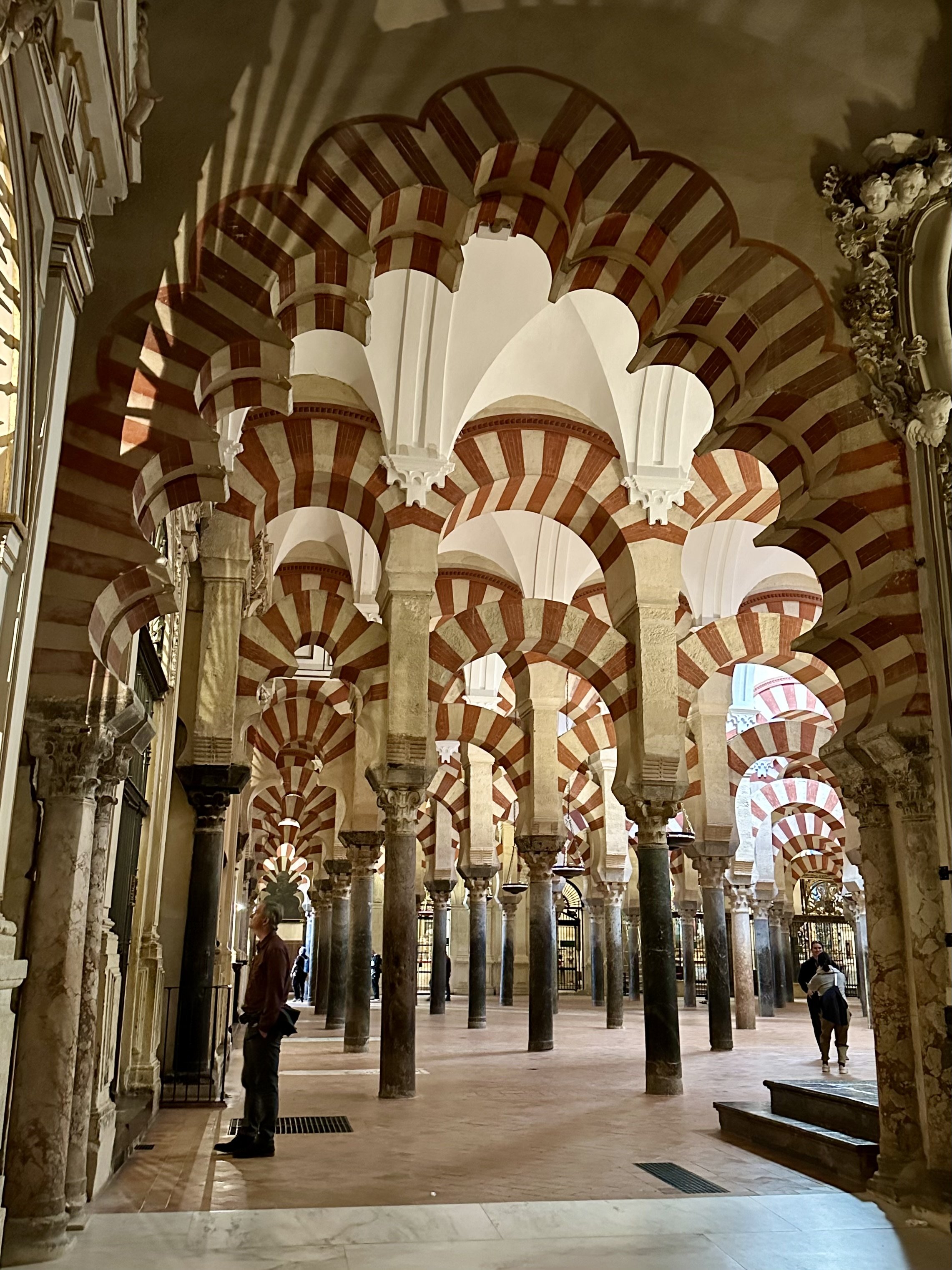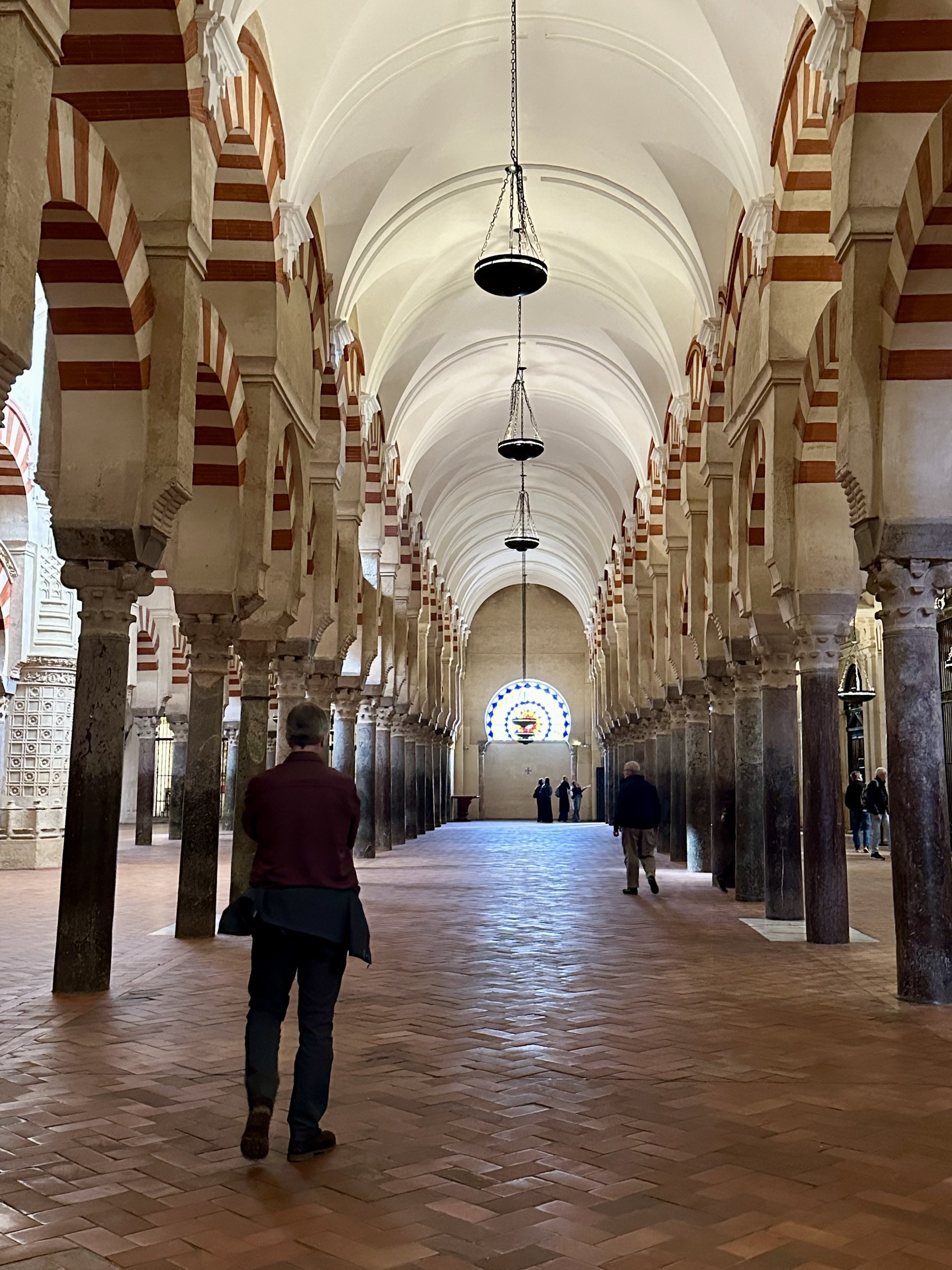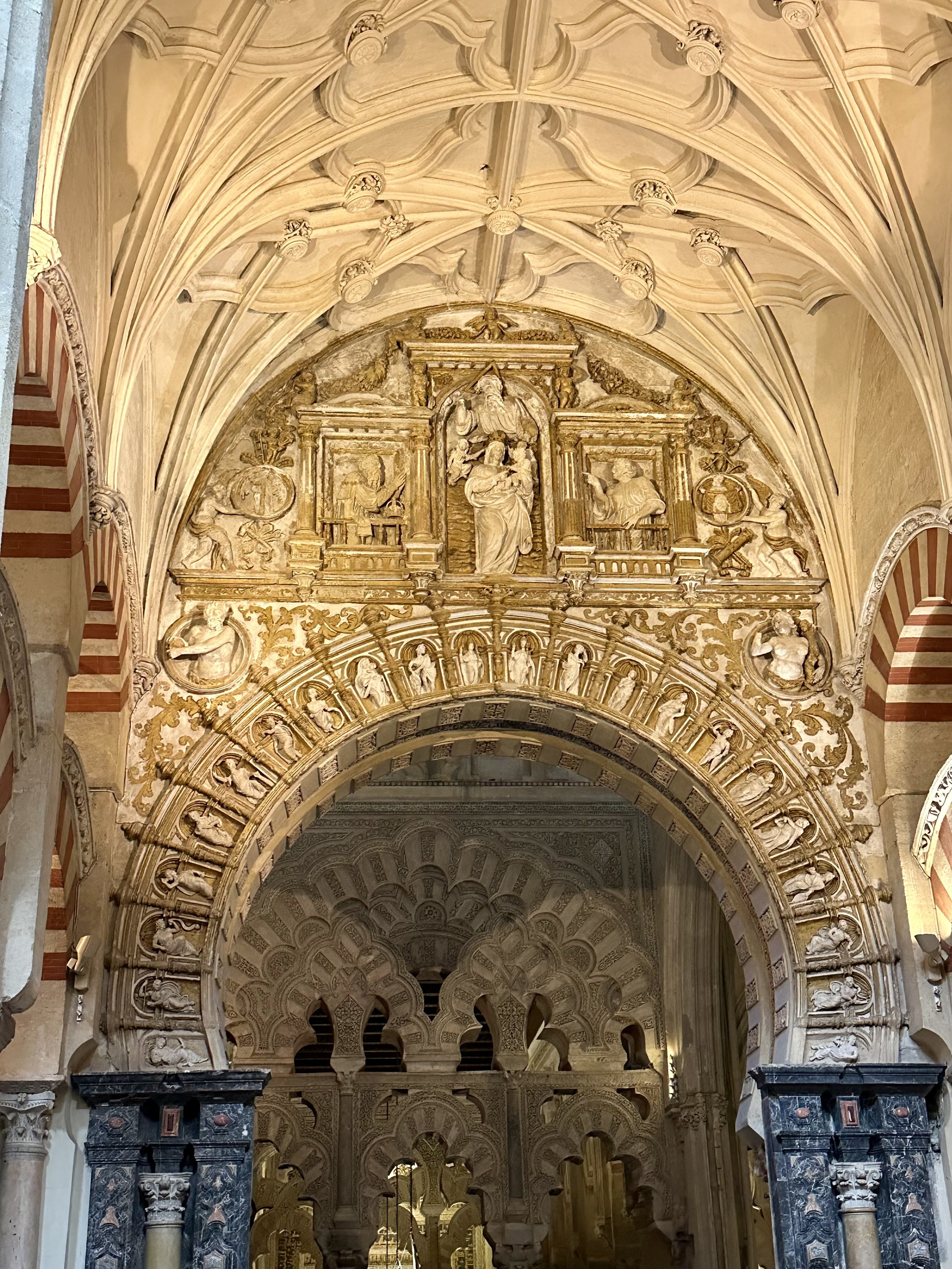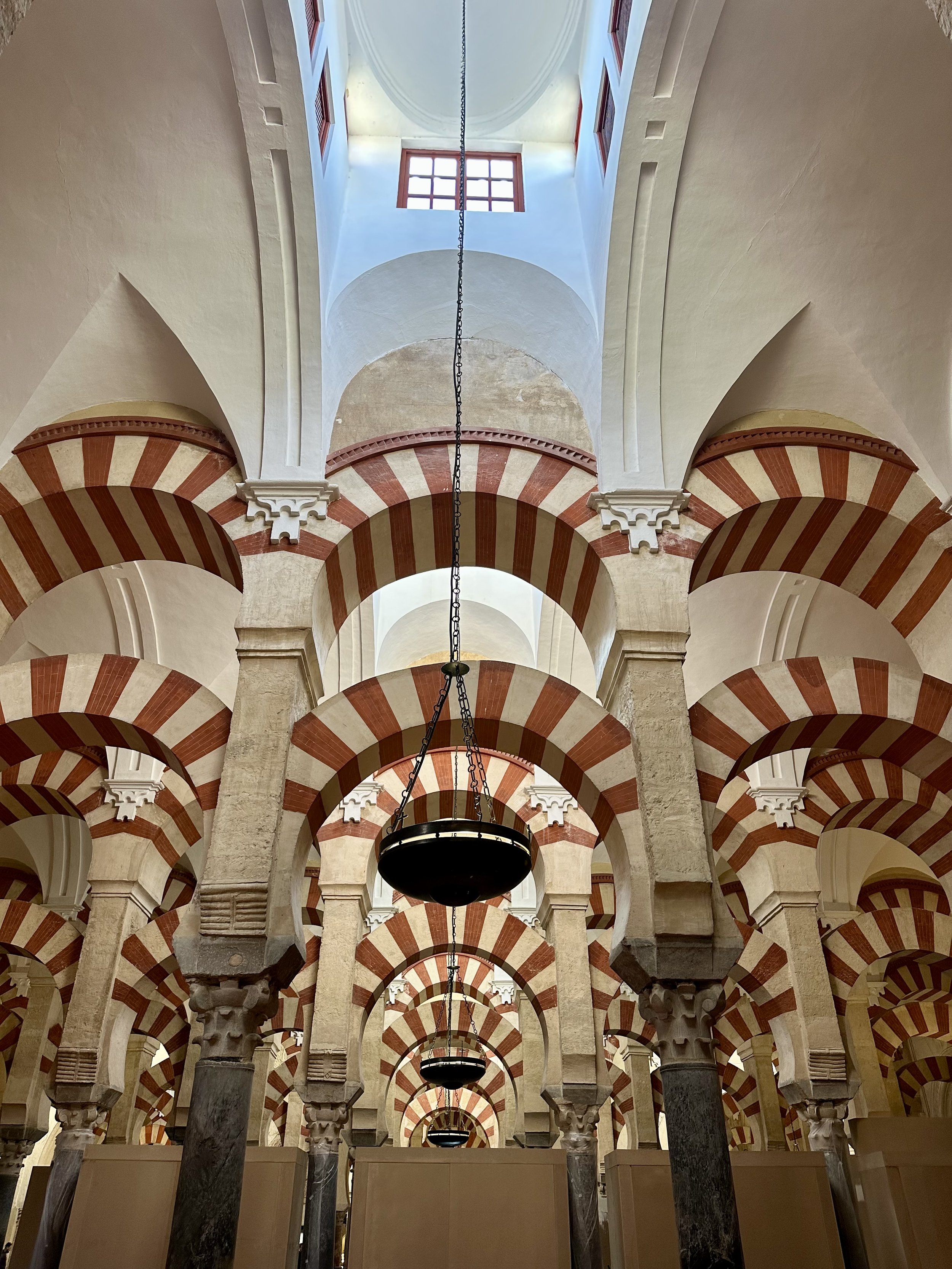Mosque-Cathedral of Córdoba
I’d heard that the Mezquita-Catedral de Córdoba (Mosque-Cathedral of Córdoba, also known as the Mezquita) was spectacular, and it was, indeed, an awesome sight to behold.
The simple description of the Mezquita is that it is a Christian cathedral inside a Muslim mosque. But its complex history is intriguing. Here are the highlights:
In the 6th century, it was a Christian basilica built by Visigoths.
In the 8th century, it became a Muslim mosque. Over the next 200 years, the Great Mosque was expanded three times, becoming one of the largest mosques in the world.
In the 12th century, the Spanish Reconquest reached Córdoba. The Great Mosque was adapted for Christian worship instead of being destroyed, thanks to King Ferdinand III of Castile.
In the 15th and 16th centuries, a Renaissance cathedral was constructed within the Great Mosque. Today, the cathedral is still used as a place of worship by the Catholic Diocese of Córdoba.
After walking through Victoria Park to the historic center and through the Jewish Quarter, we reached the Mezquita. The exterior was massive and fortress-like. Most sections of the long wall had Islamic decoration, in varying states of repair. A few sections had Christian ornamentation.
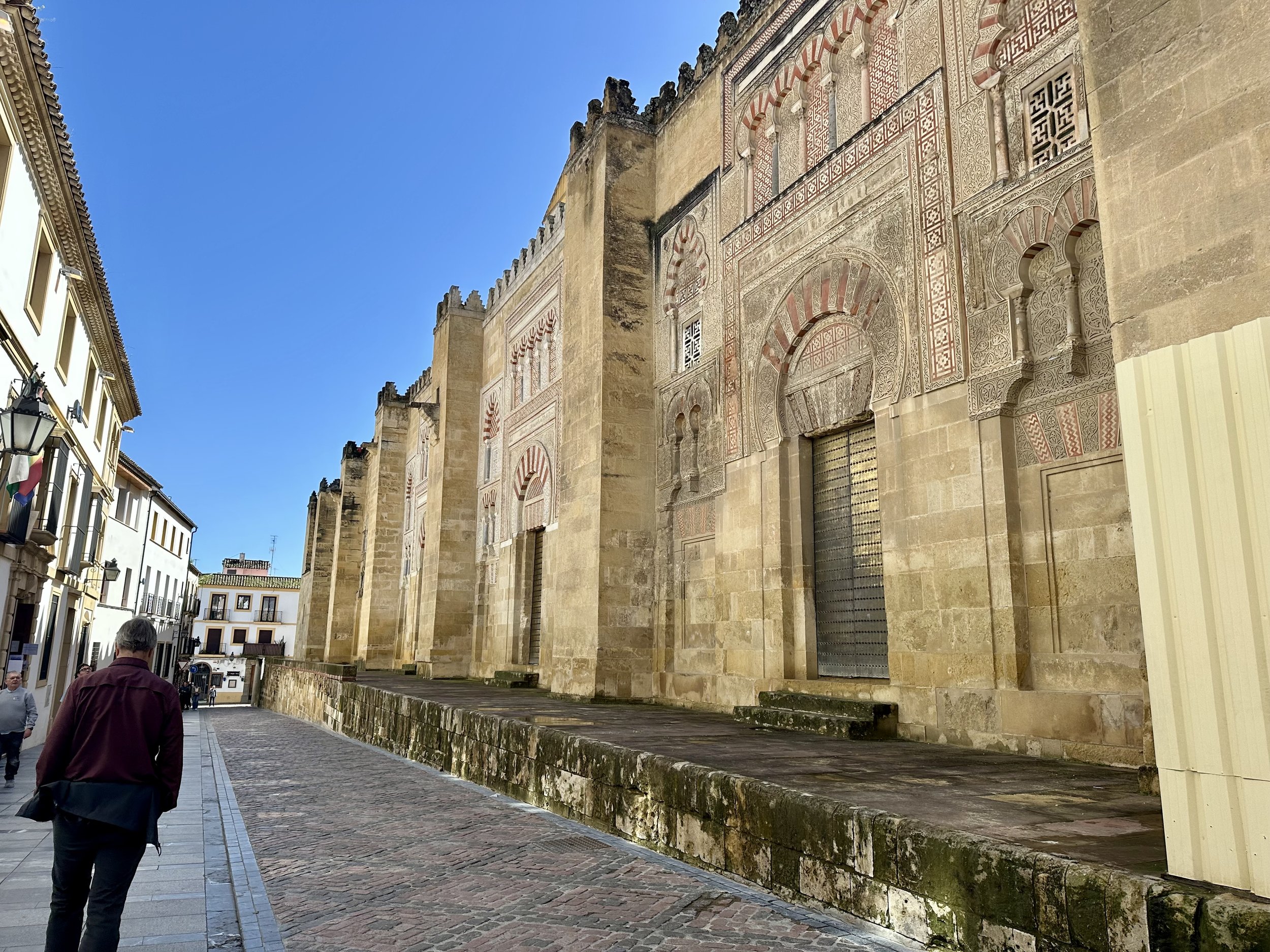
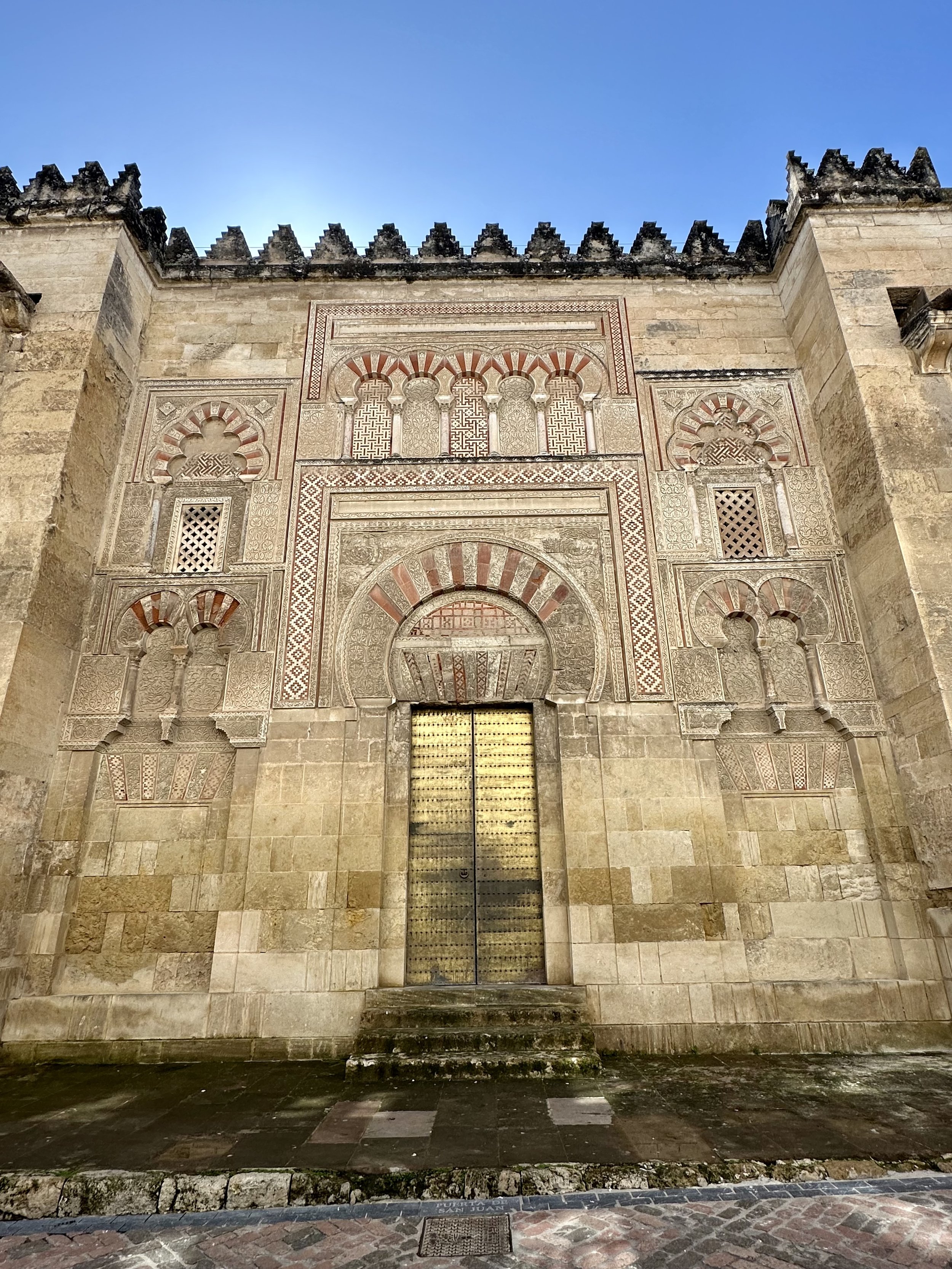
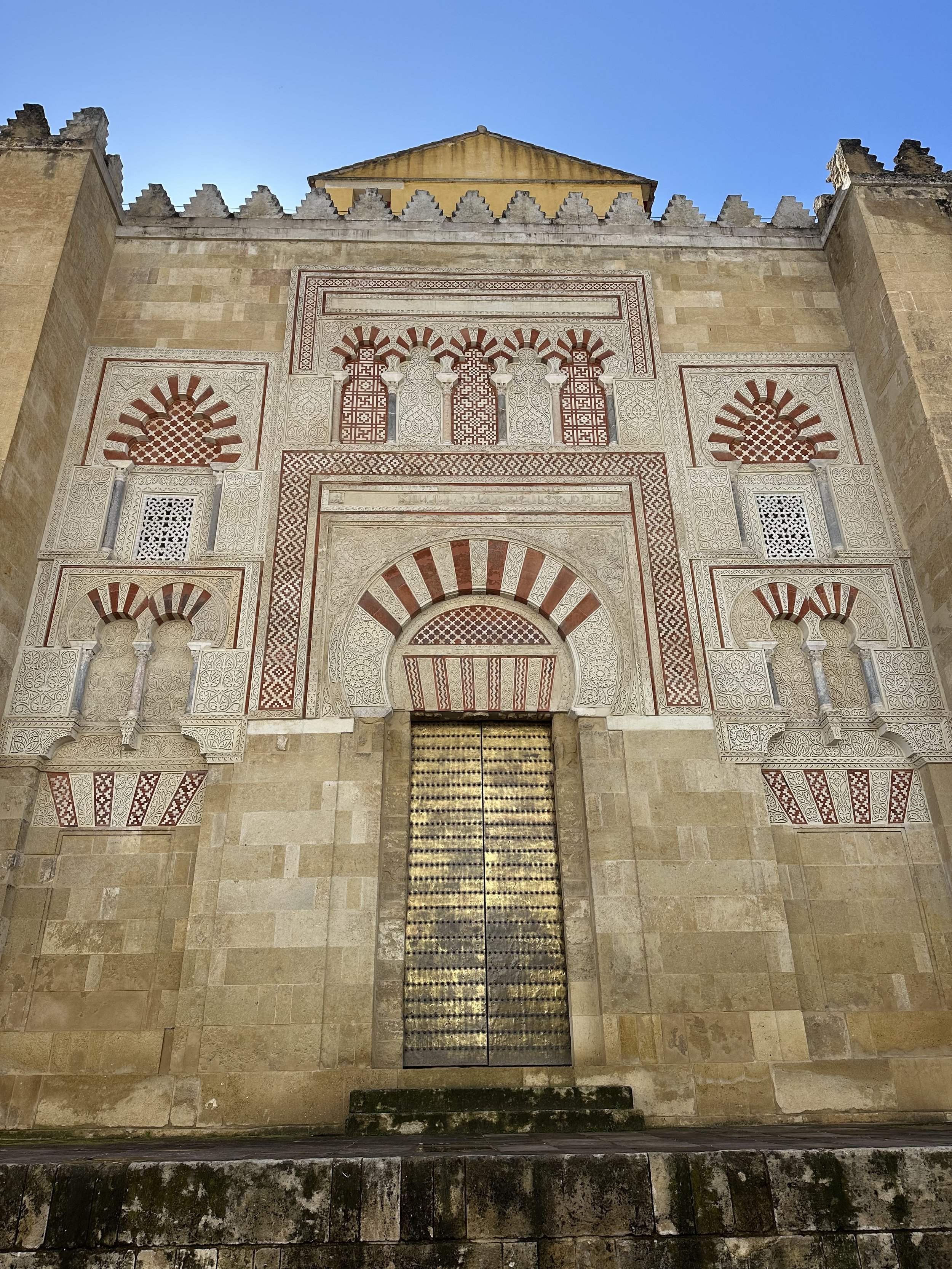

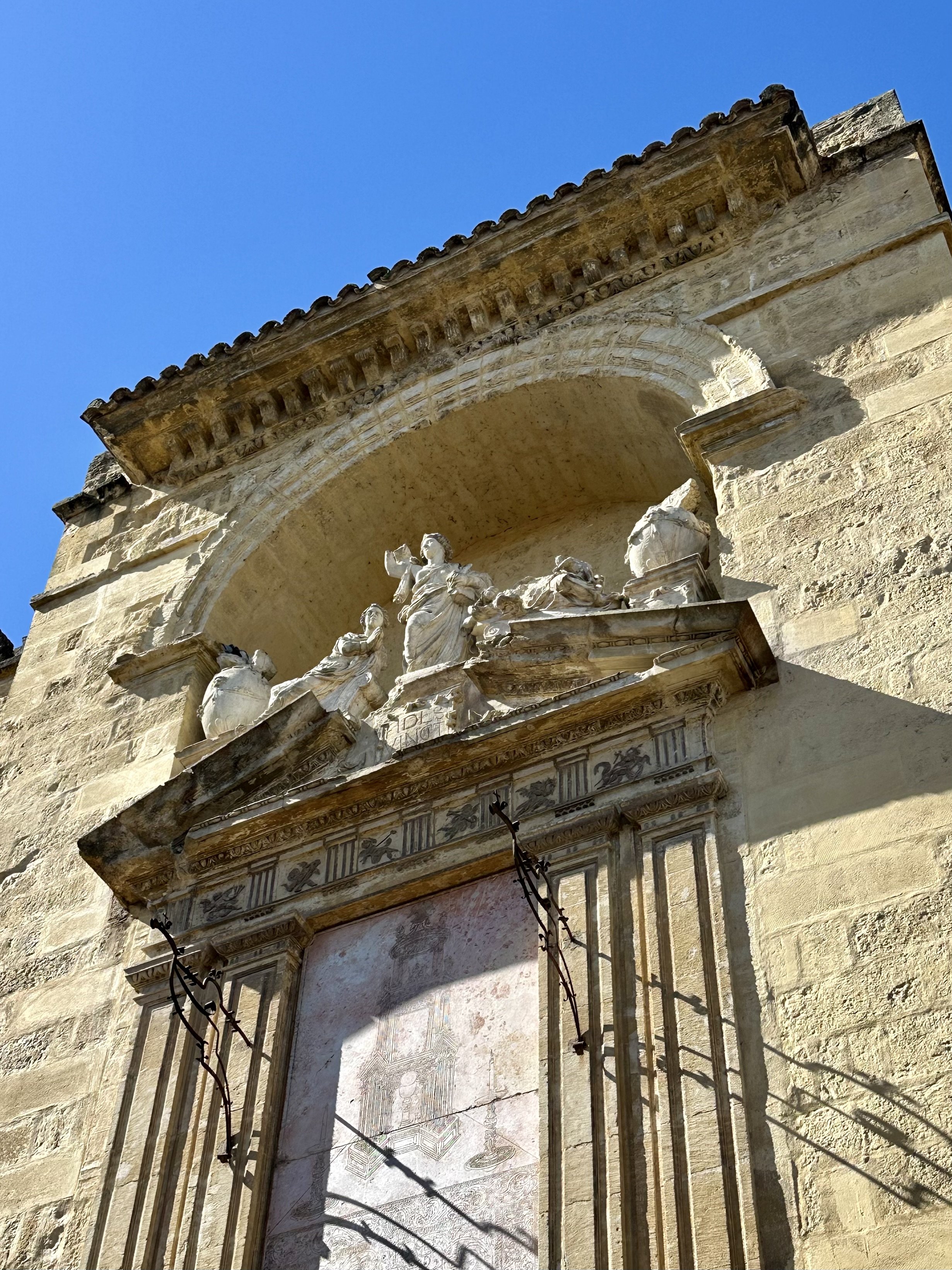
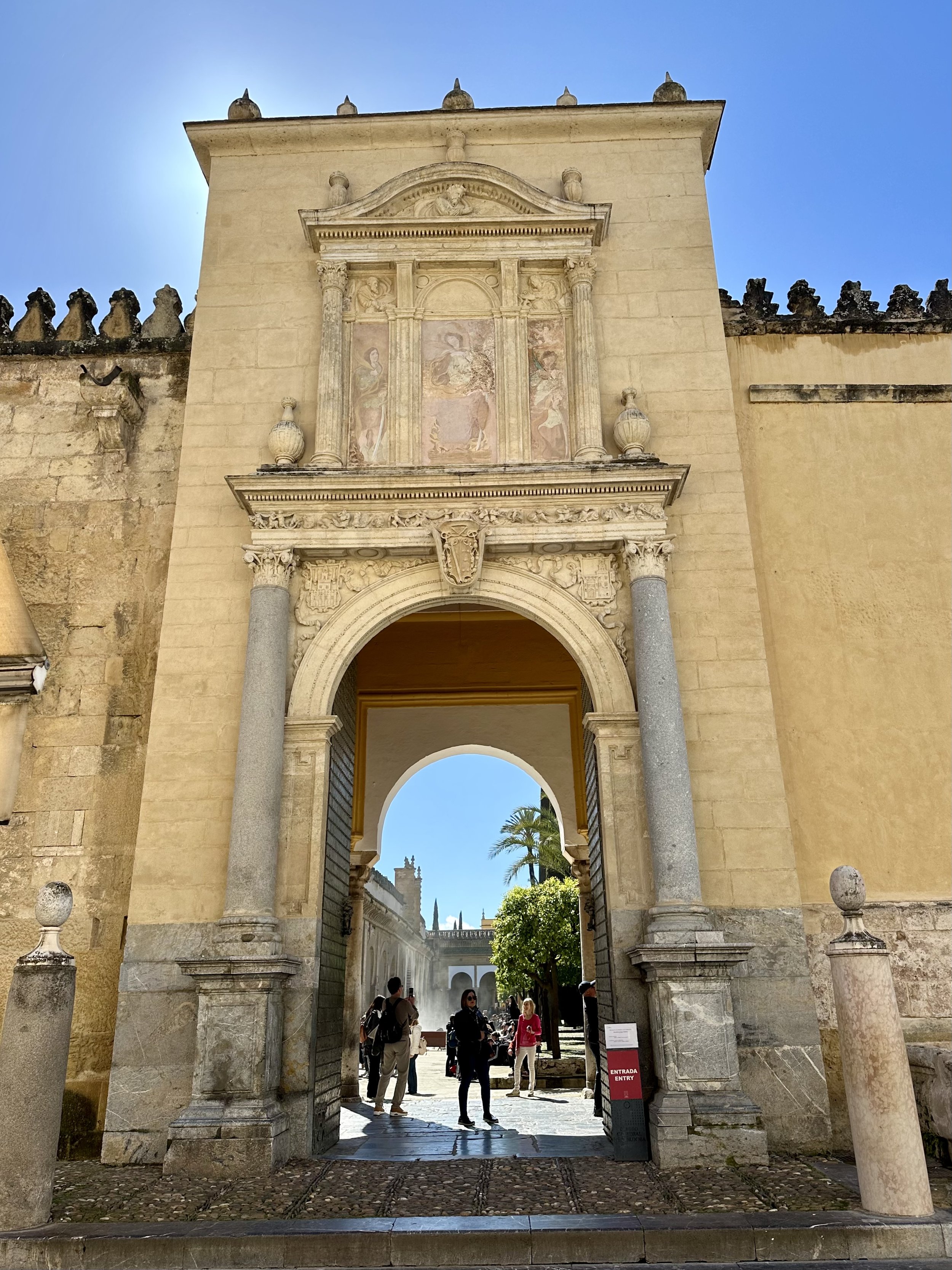
We stepped into the Courtyard of the Orange Trees, which had once been the ablutions sahn of the Great Mosque. The trees were watered by a central fountain via irrigation channels. At one side was a tall Renaissance-style bell tower, which was built around the mosque’s original minaret. Carved wooden beams from the mosque’s original ceiling were mounted on the walls of the gallery. On the far side of the courtyard, we could see the upper part of the cathedral.
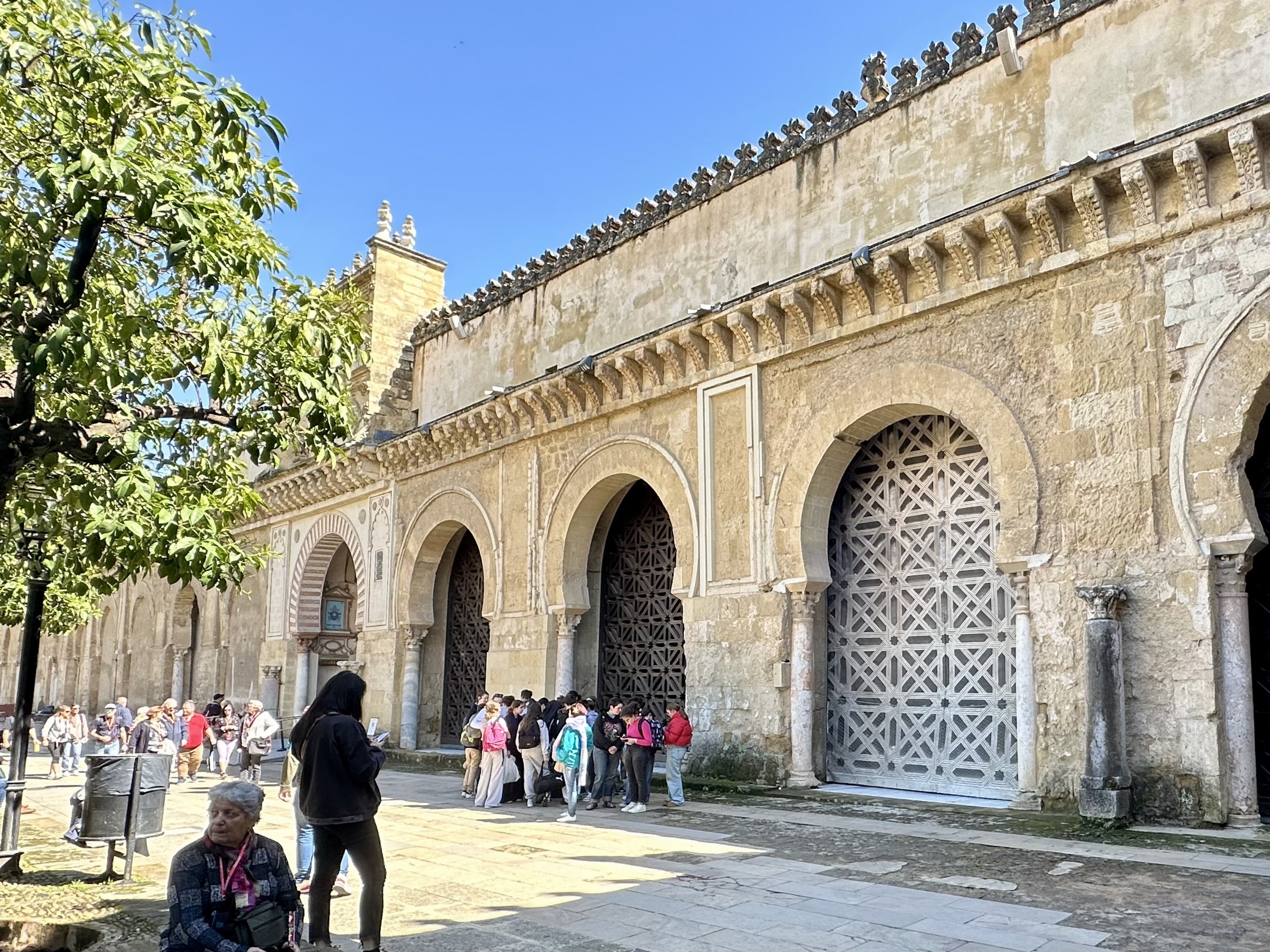
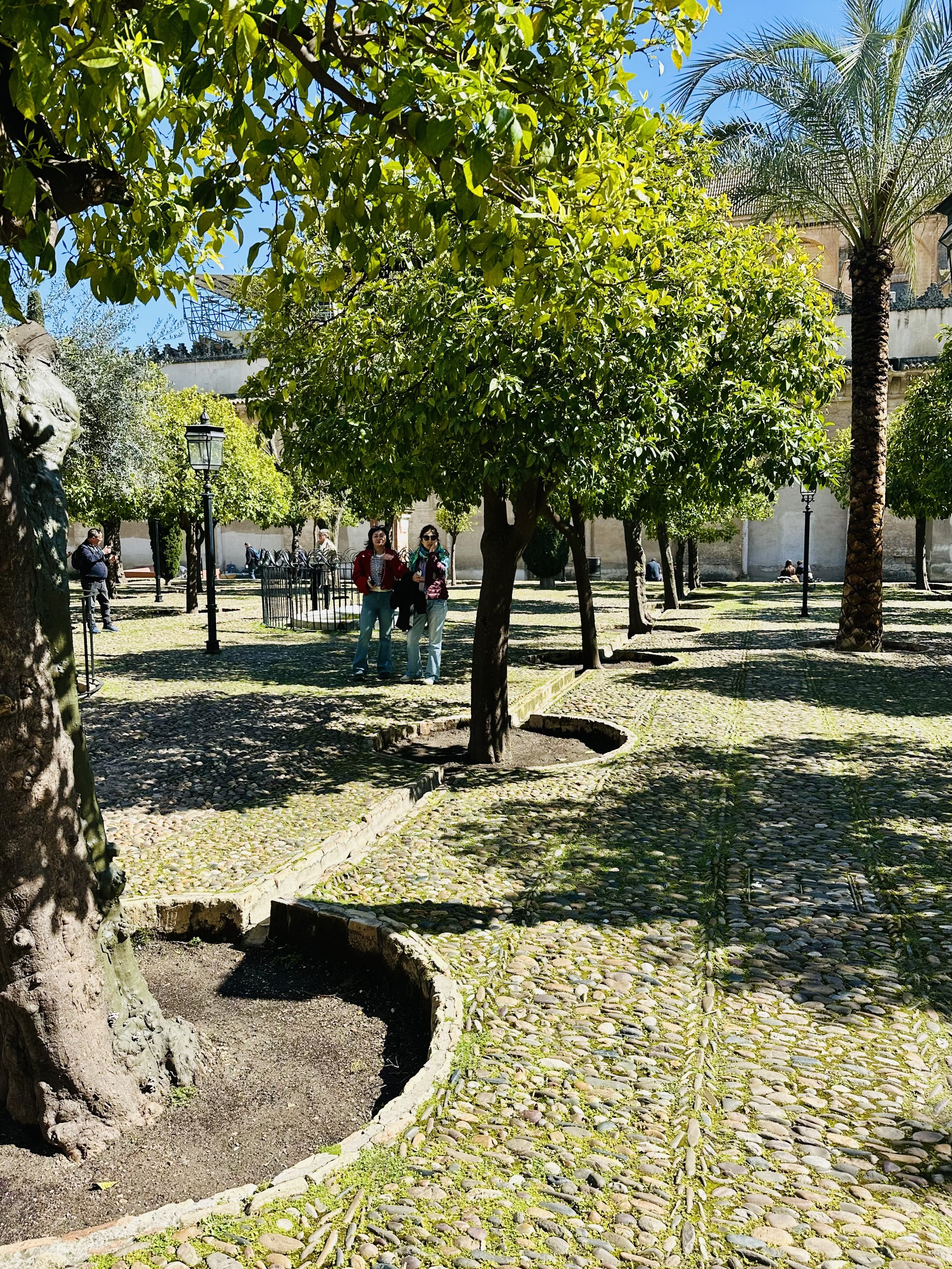
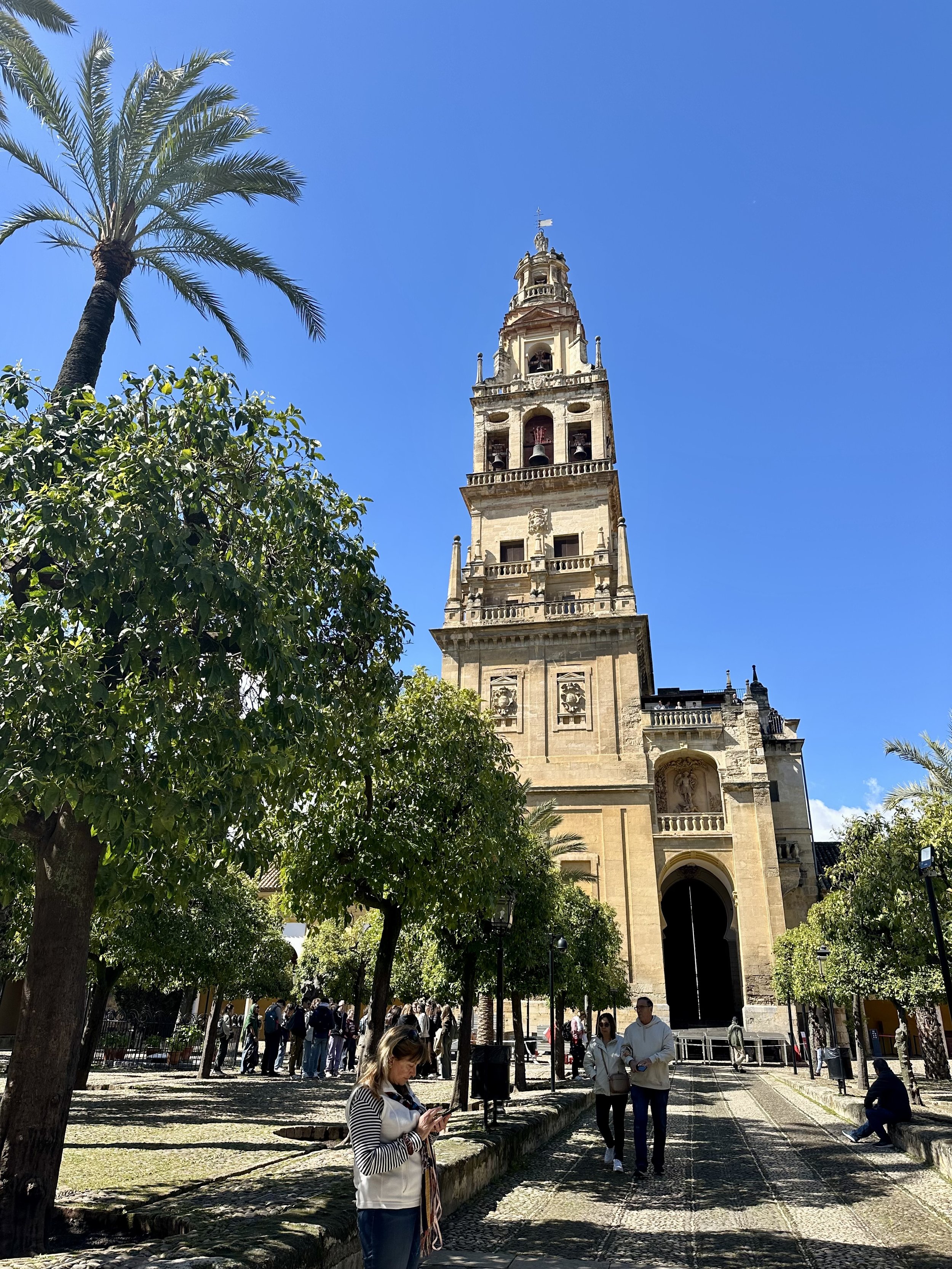
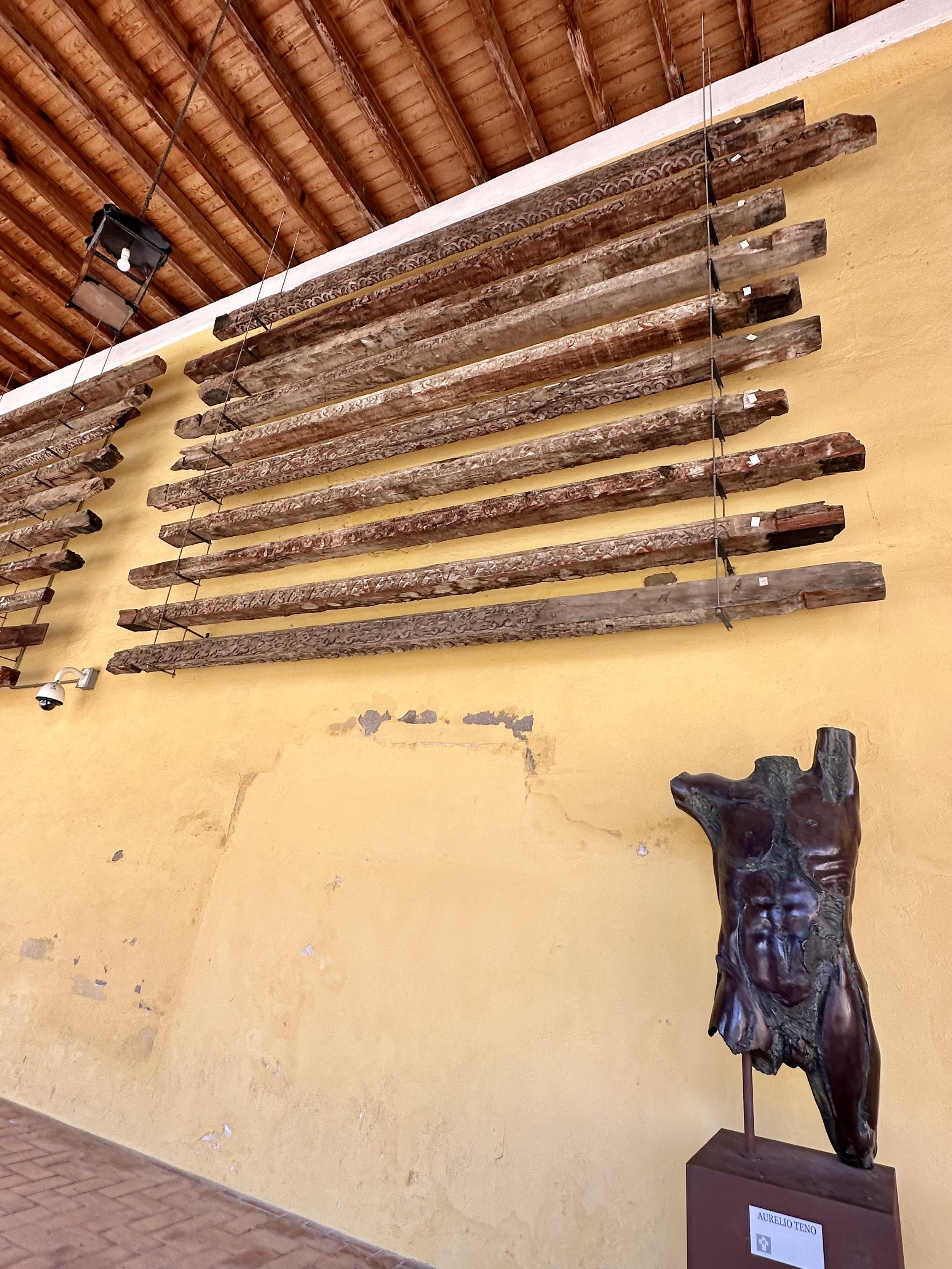
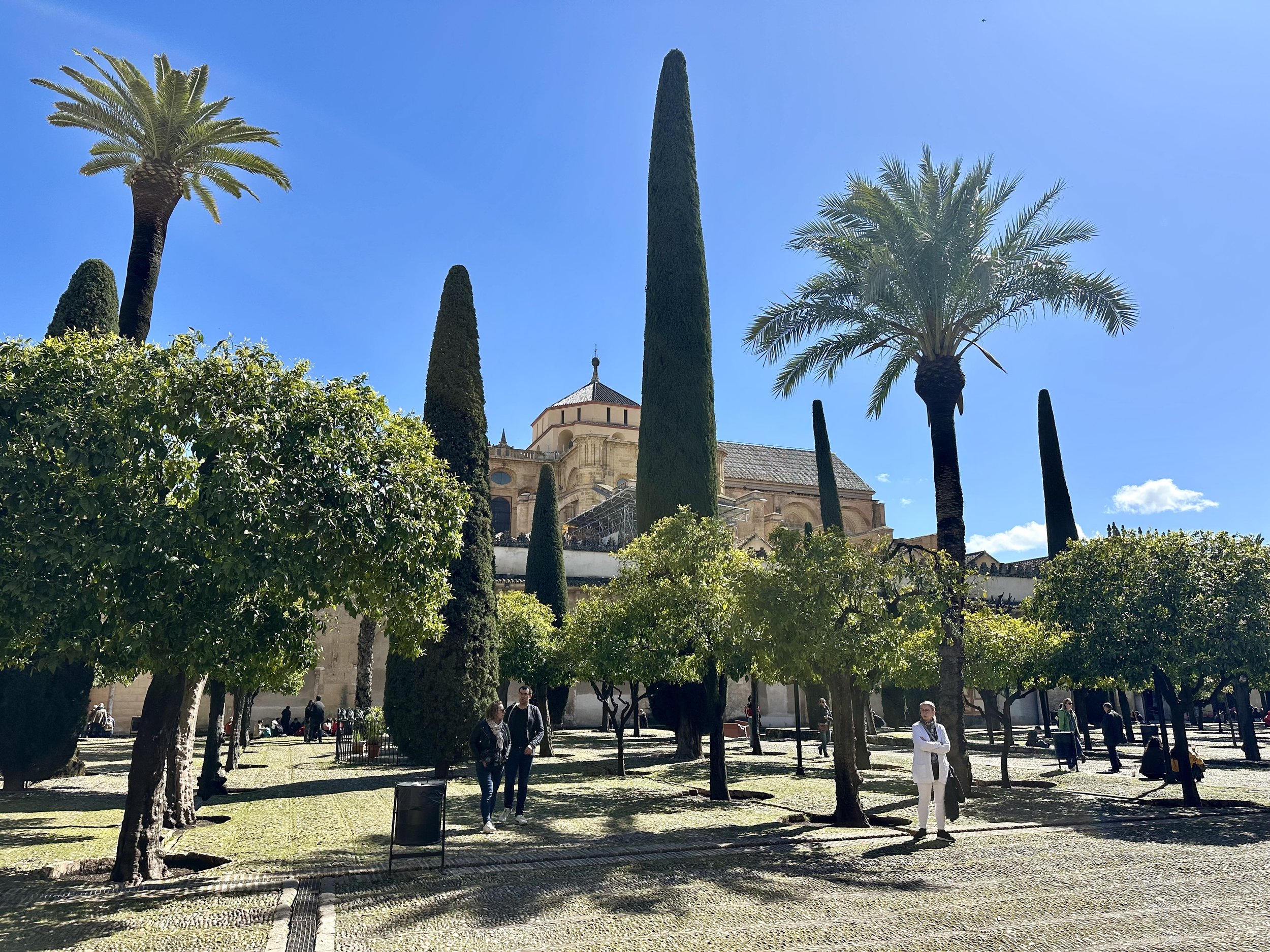
We stepped inside the Mezquita, and it was magical. Two-tiered arches were made from alternating bands of red brick and white stone. Graceful marble columns lifted the arches up to the beamed wooden ceiling There was no trick with mirrors - there were just hundreds of those beautiful arches, stretching in all directions, a far as the eye could see. It was mesmerizing.
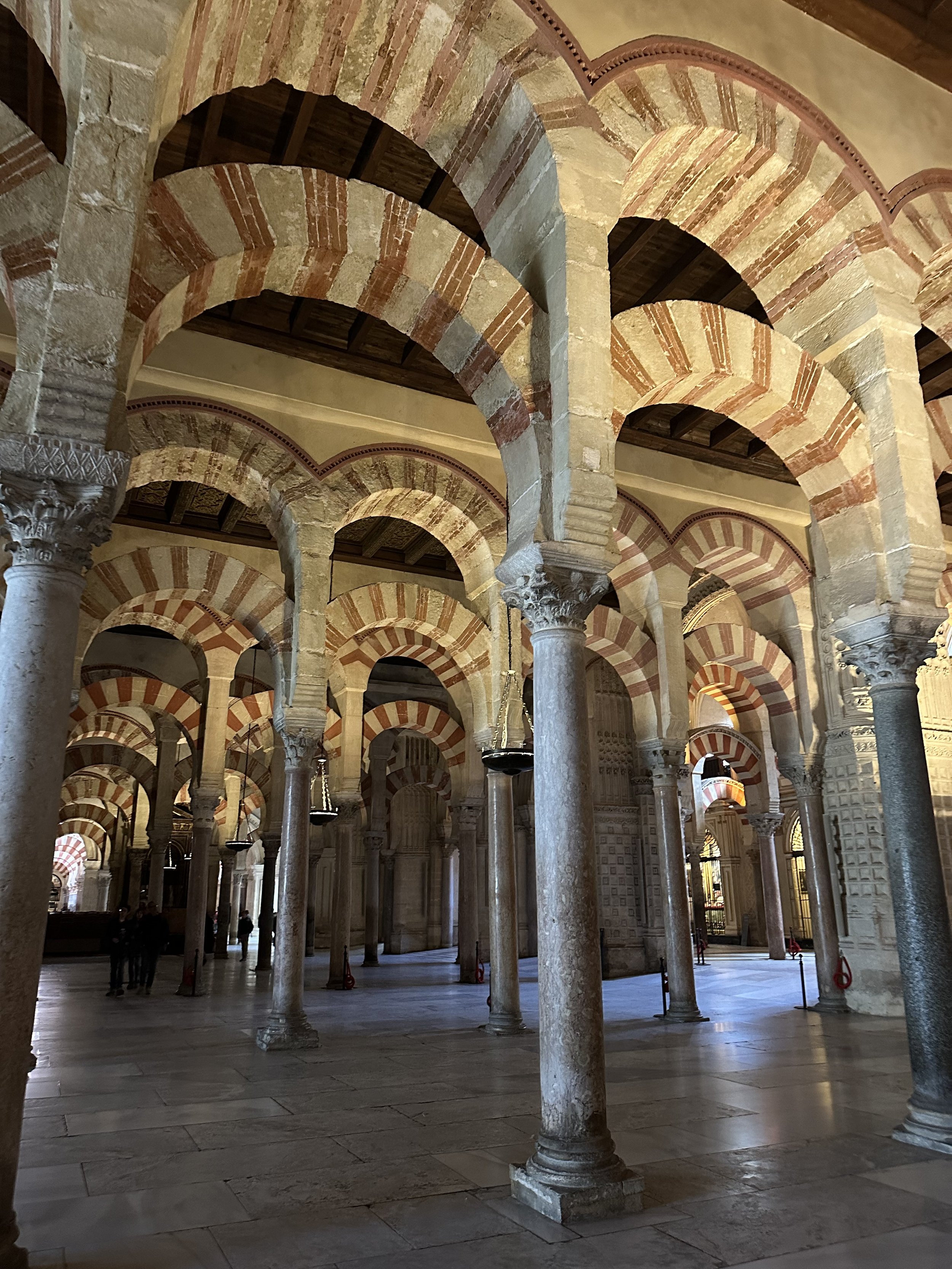


The mihrab, the prayer area for the caliph, was highly decorated with multi-foil arches, intricate mosaics, and a gold, domed ceiling. The blue and gold Arabic inscription around the doorway contained excerpts from the Koran.
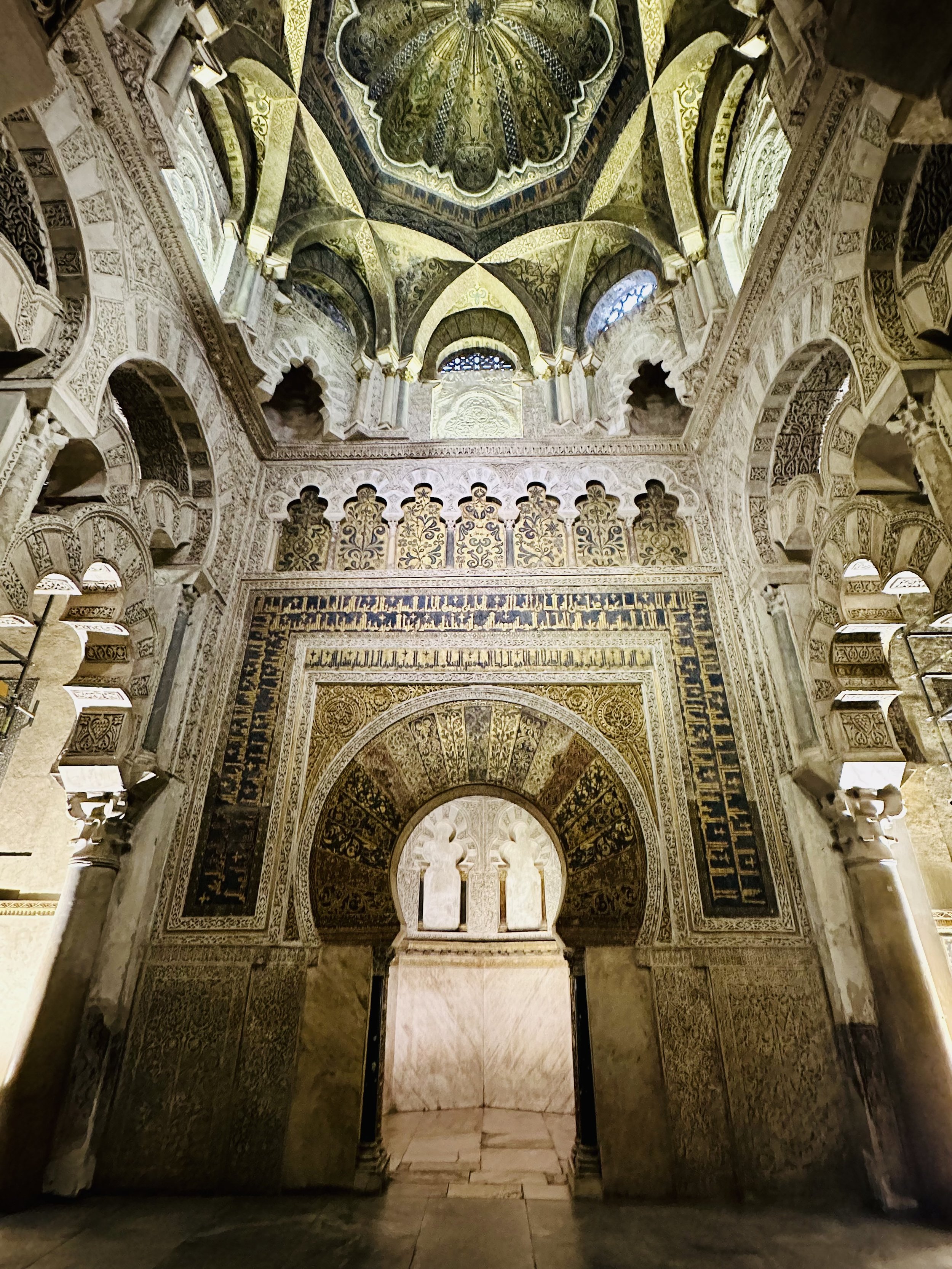
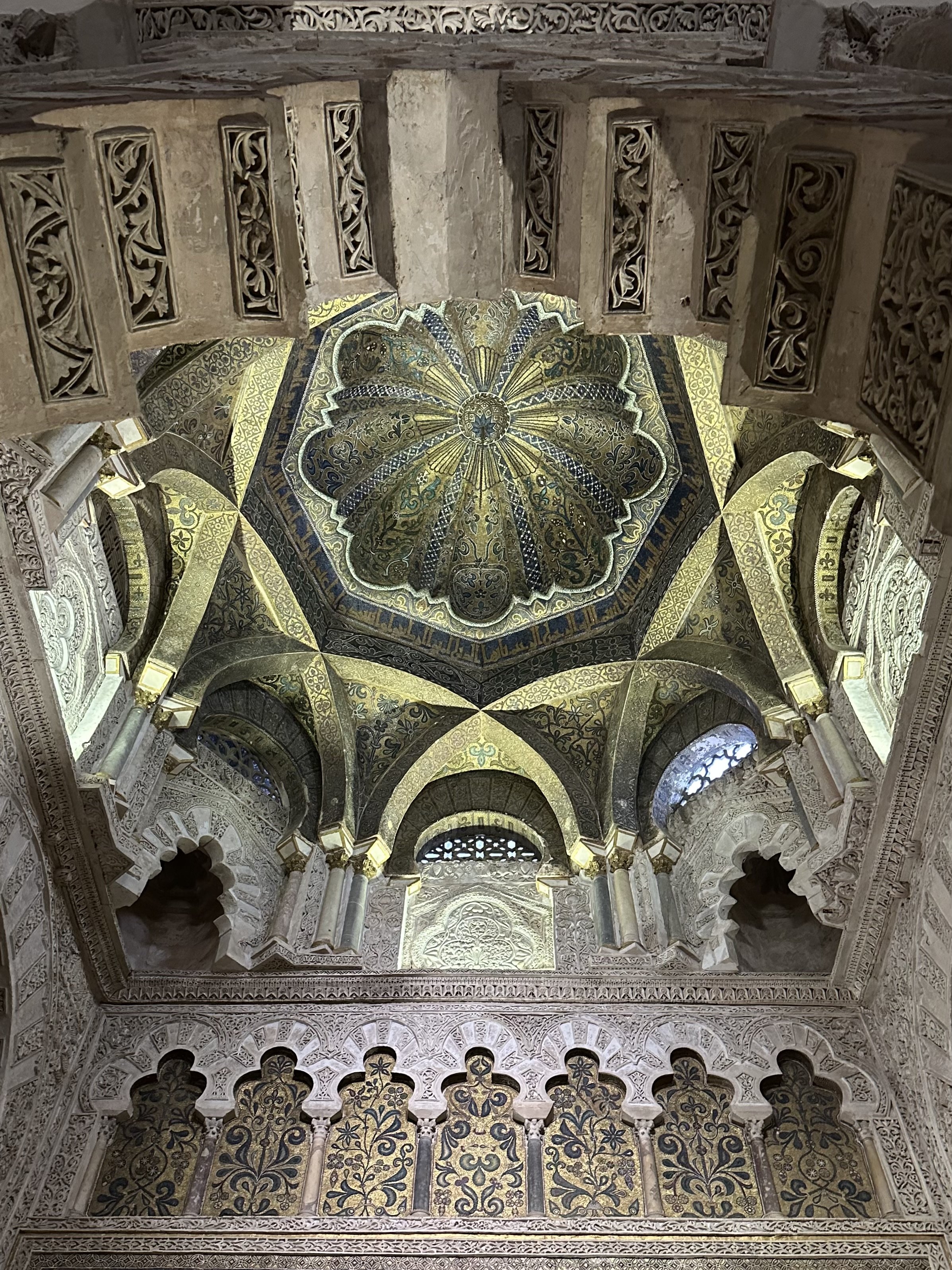
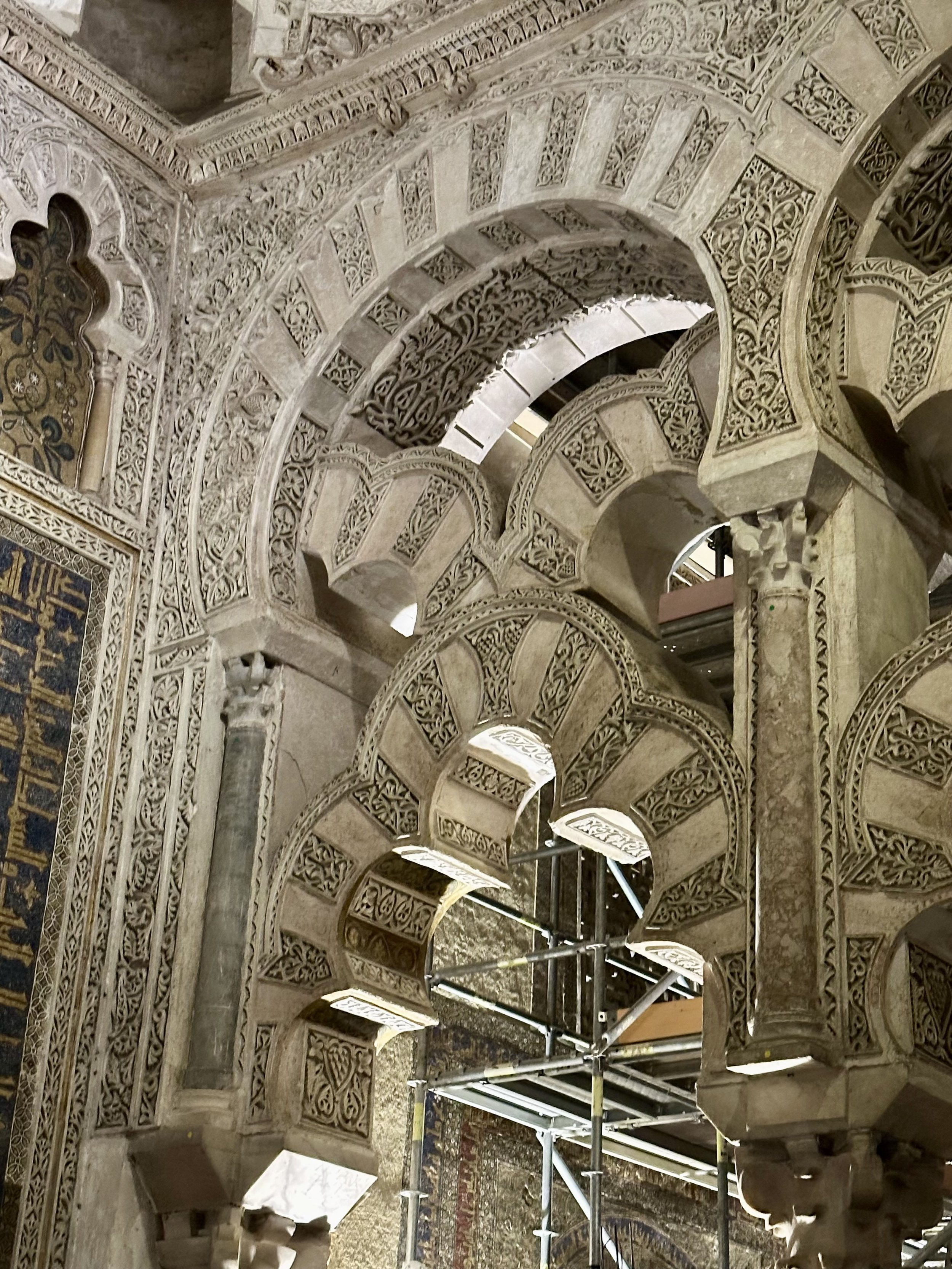
The original Main Chapel of the cathedral (now called the Villaviciosa Chapel) was a Gothic nave, with a vaulted wooden ceiling, stone pillars, pointed arches, and stained glass windows. At the altar end of the nave was an especially gorgeous part of the mosque, with intersecting multi-foil arches and a distinctive ceiling made from more intersecting arches.
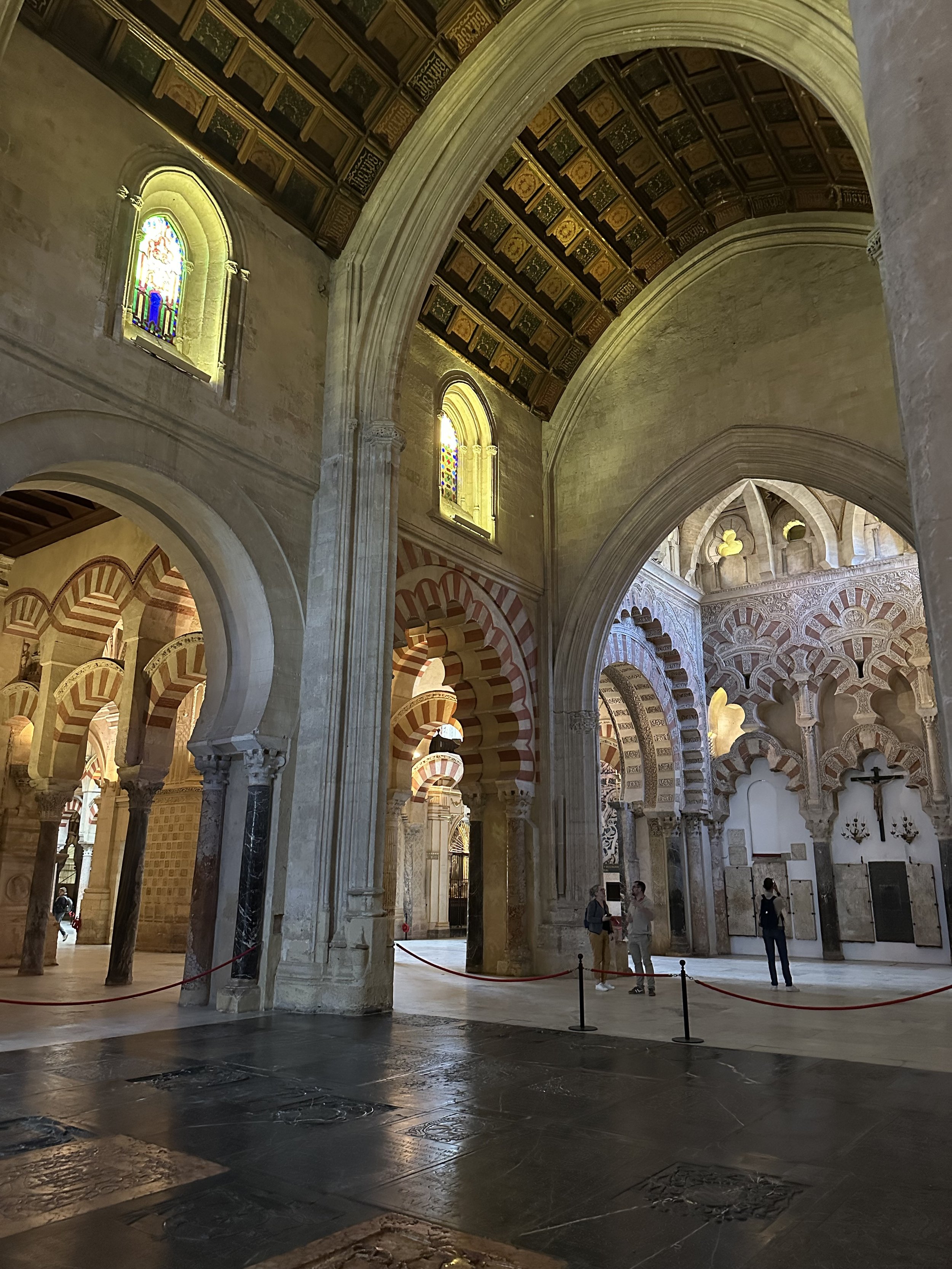
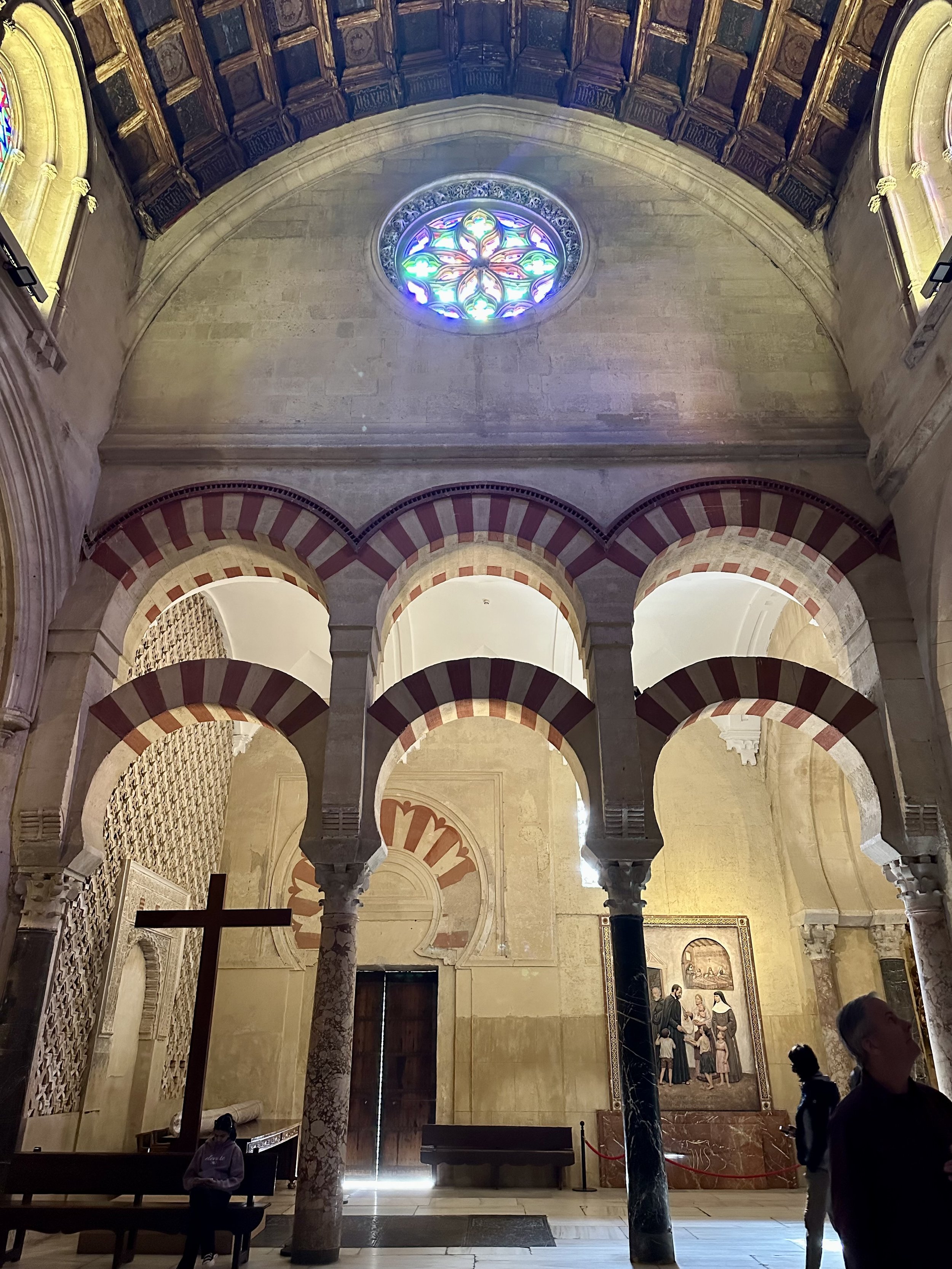
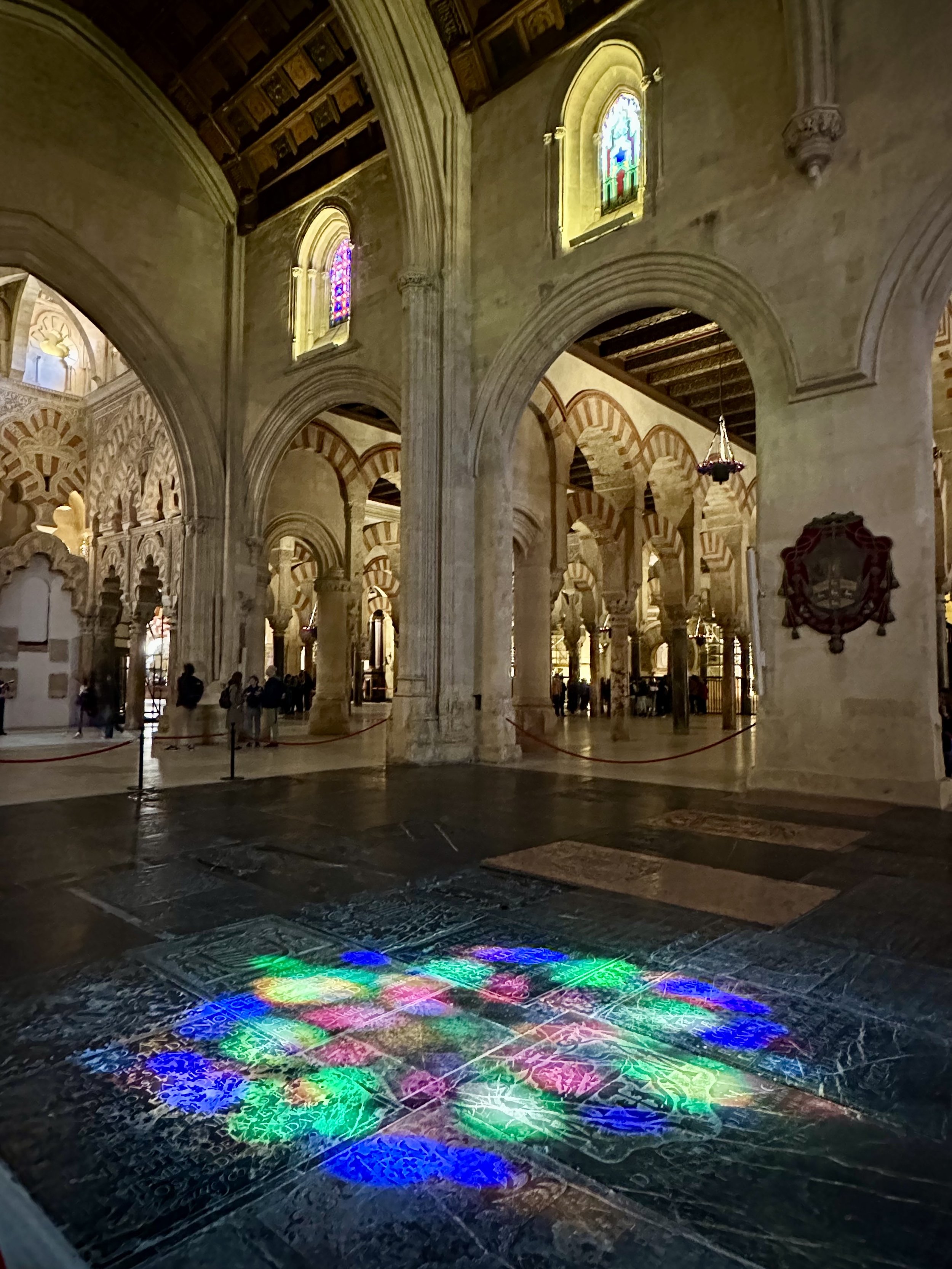
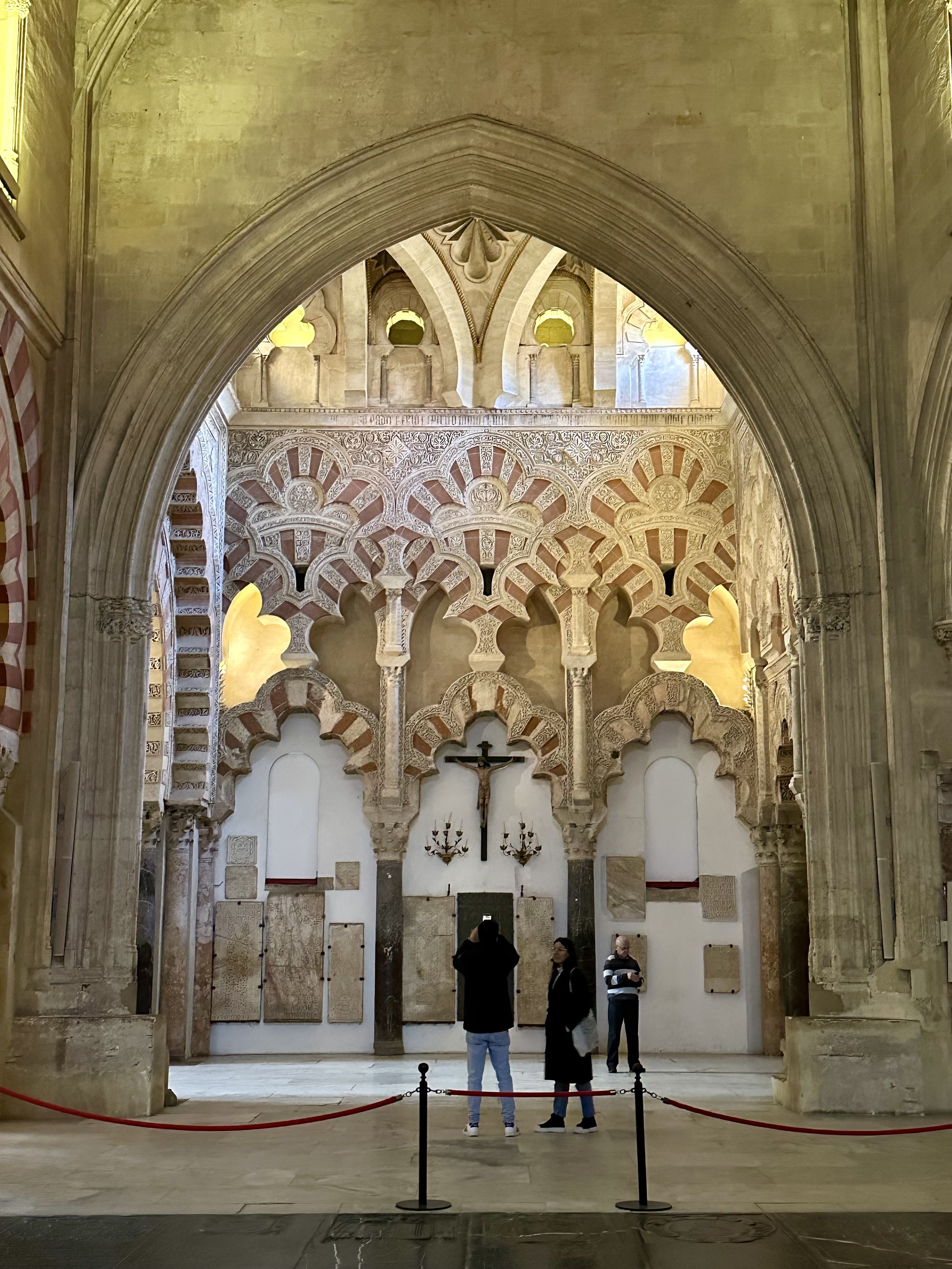


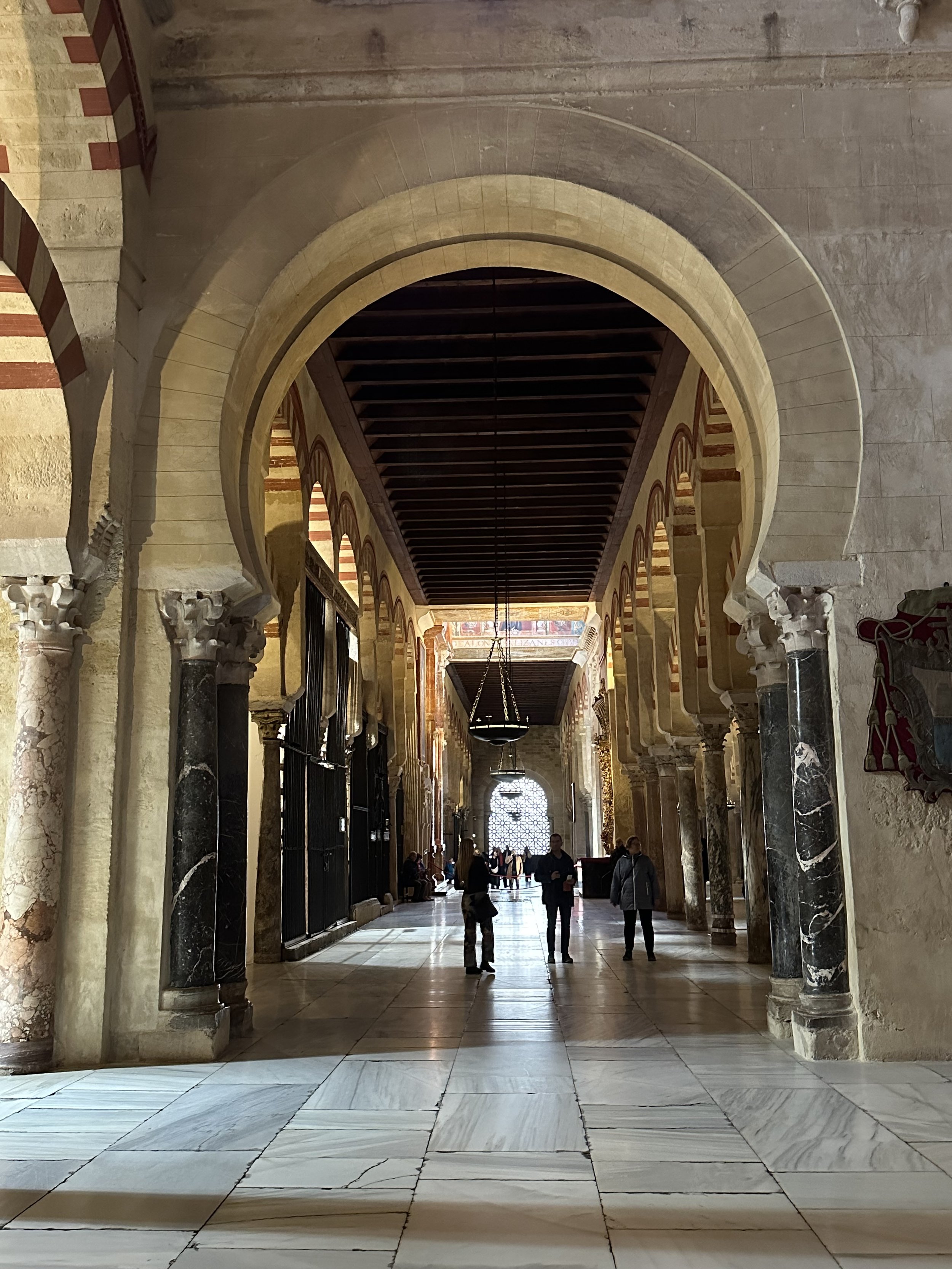
There were dozens of Christian side chapels. Some had been inserted between the double arches of the mosque. Others featured their own decorative arches and ceilings. The Chapel of Saint Teresa had a Baroque domed ceiling, and a large golden monstrance was on display. The Church of the Tabernacle was covered with beautiful paintings.
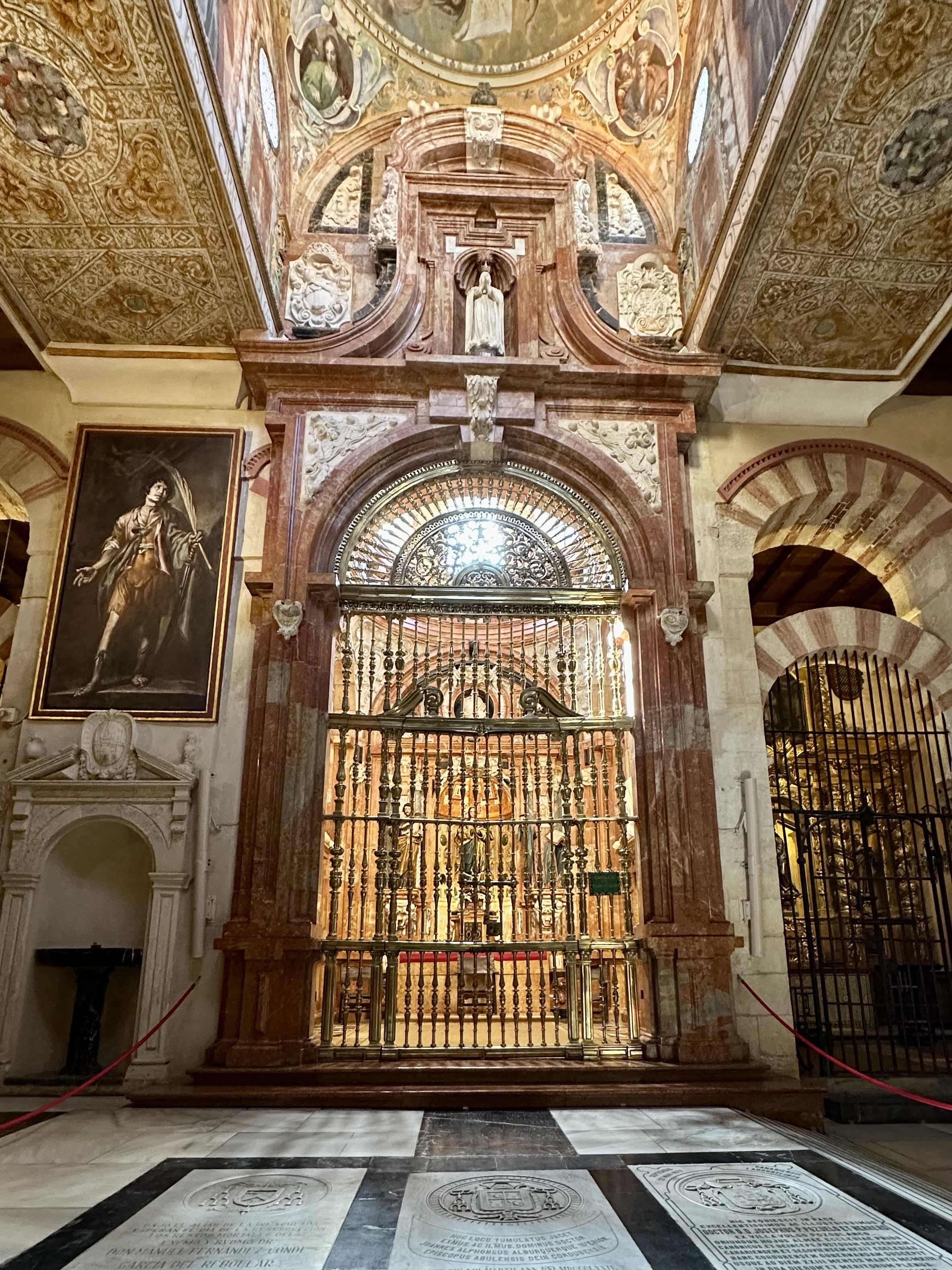
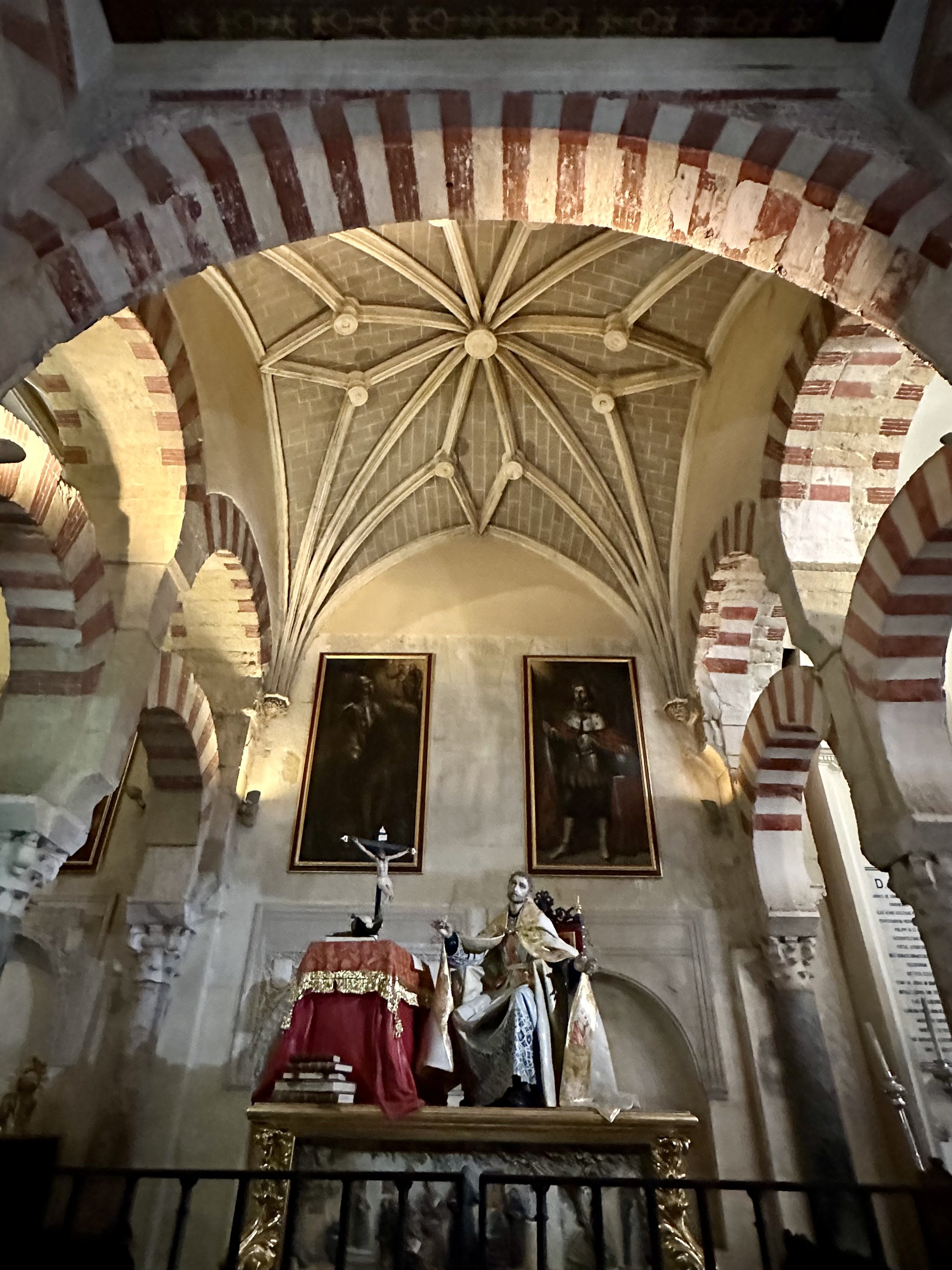
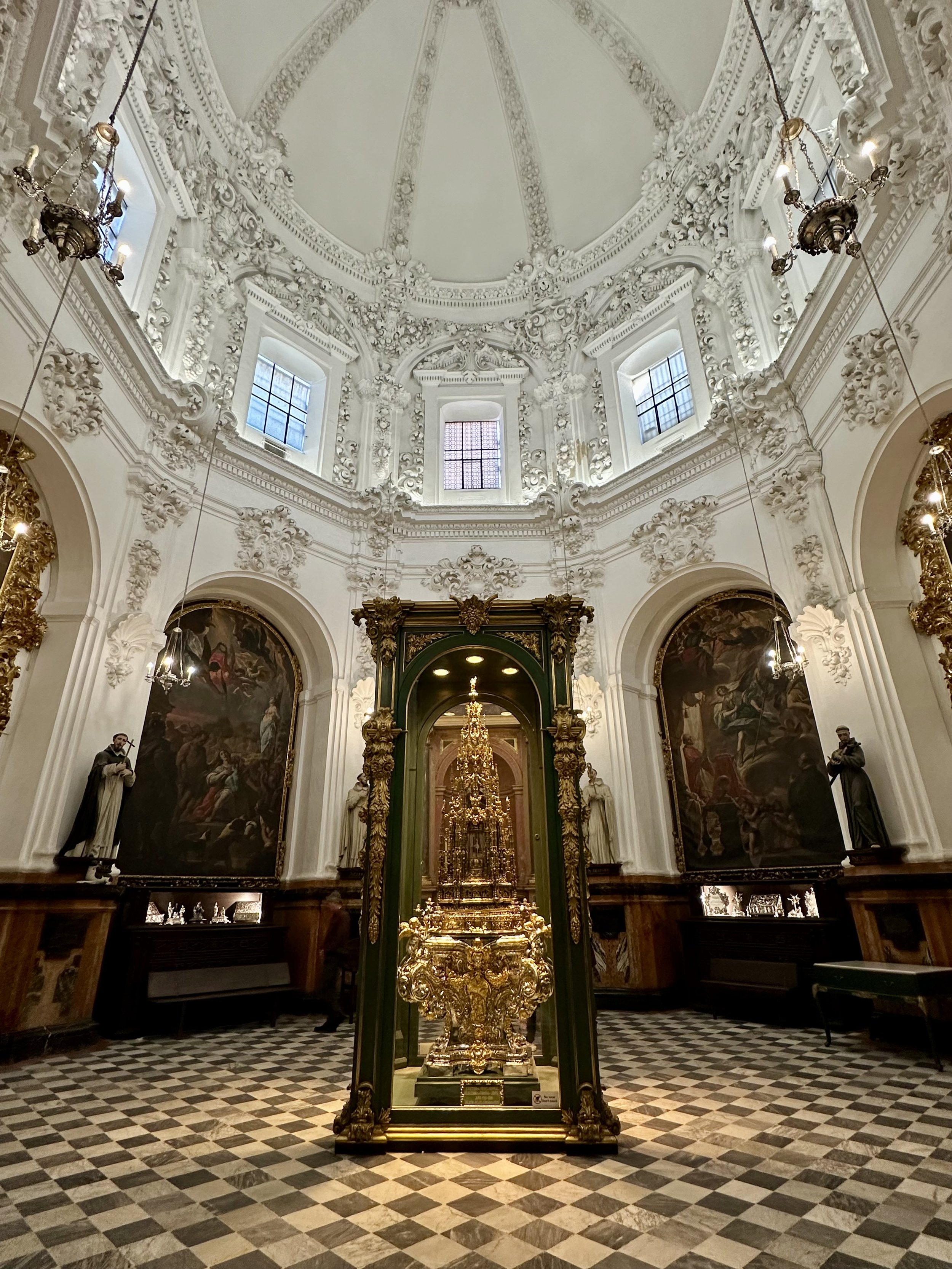
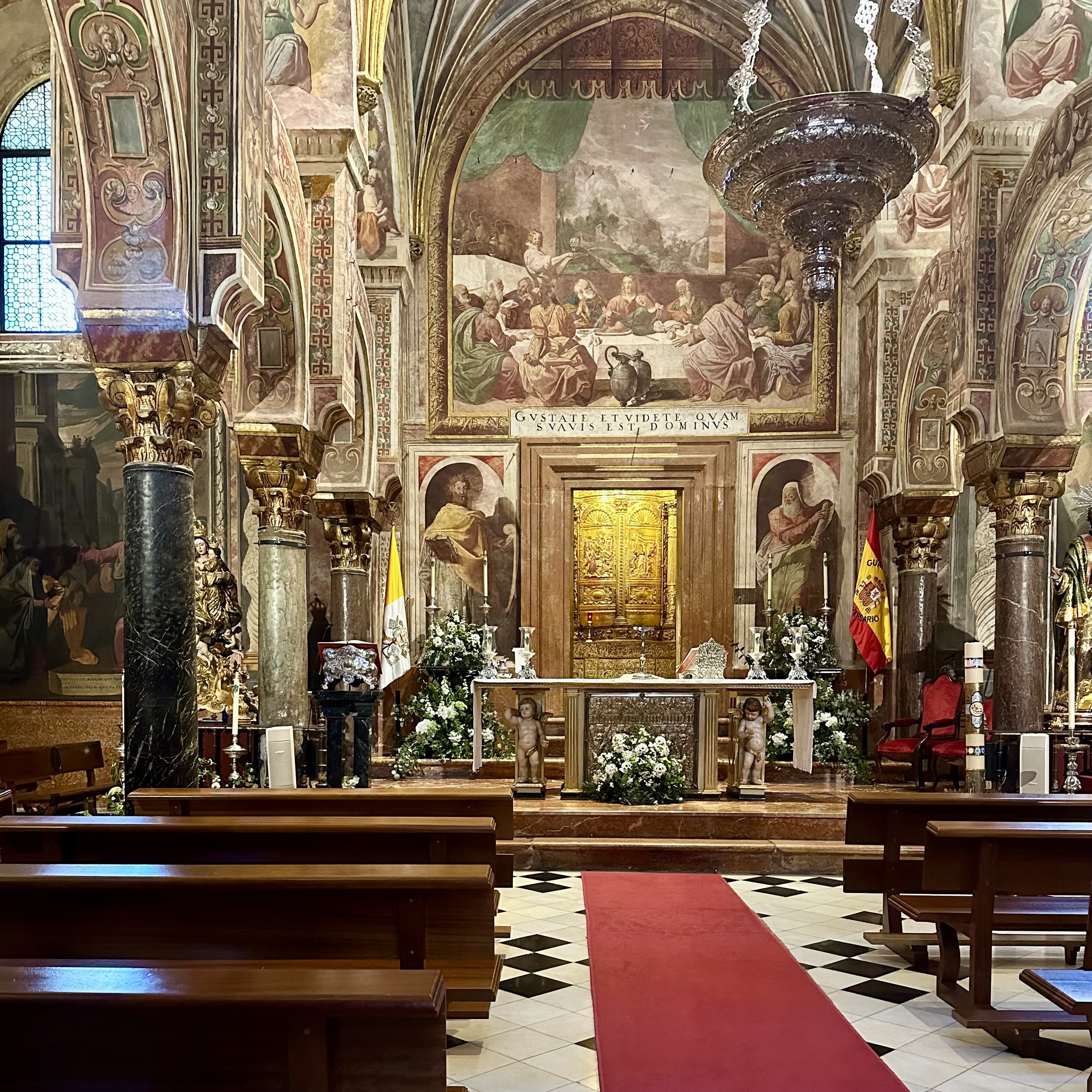


At last we stepped into the Main Chapel of the cathedral. WOW. We sat in a pew and tried to take it all in. The main altar in front of us featured paintings of the Assumption and several saints. Overhead was an oval dome, held up by friezes of the four evangelists. The transept arm at each side had the striped double arches of the Great Mosque and a tall vaulted ceiling. Behind us was the choir, topped by a lavishly decorated barrel vault. It was a visual barrage of over-the-top Renaissance magnificence.
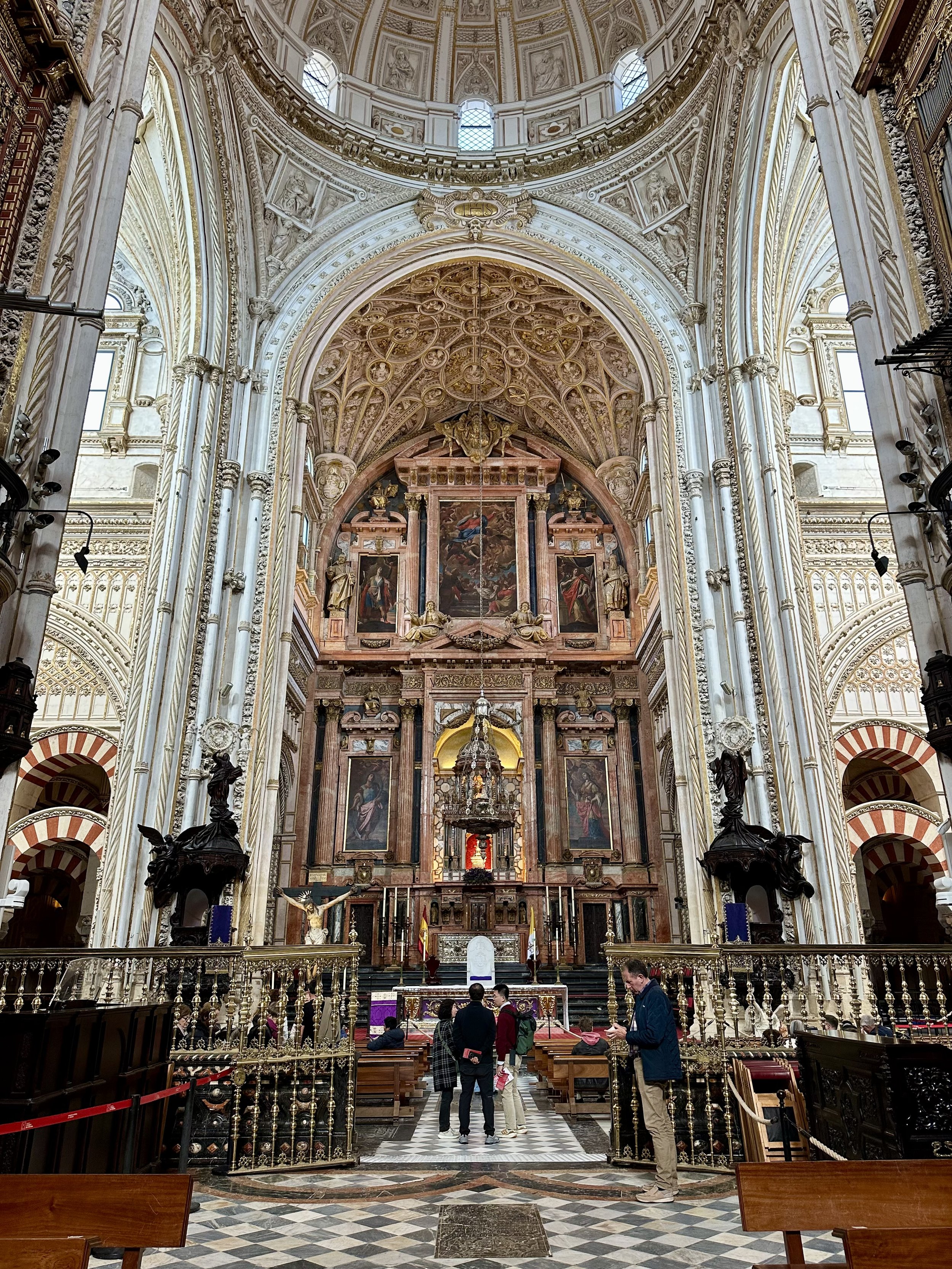
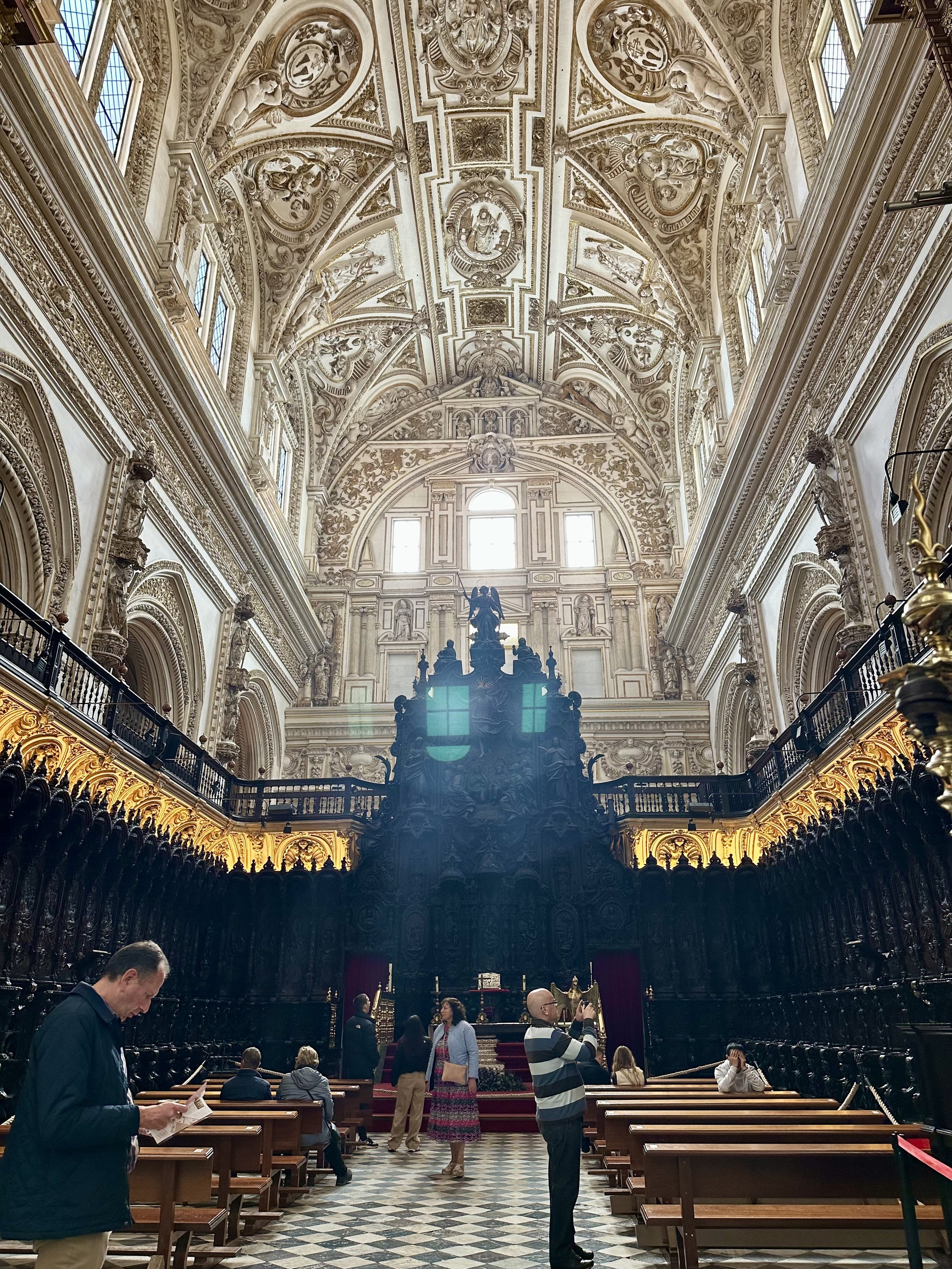
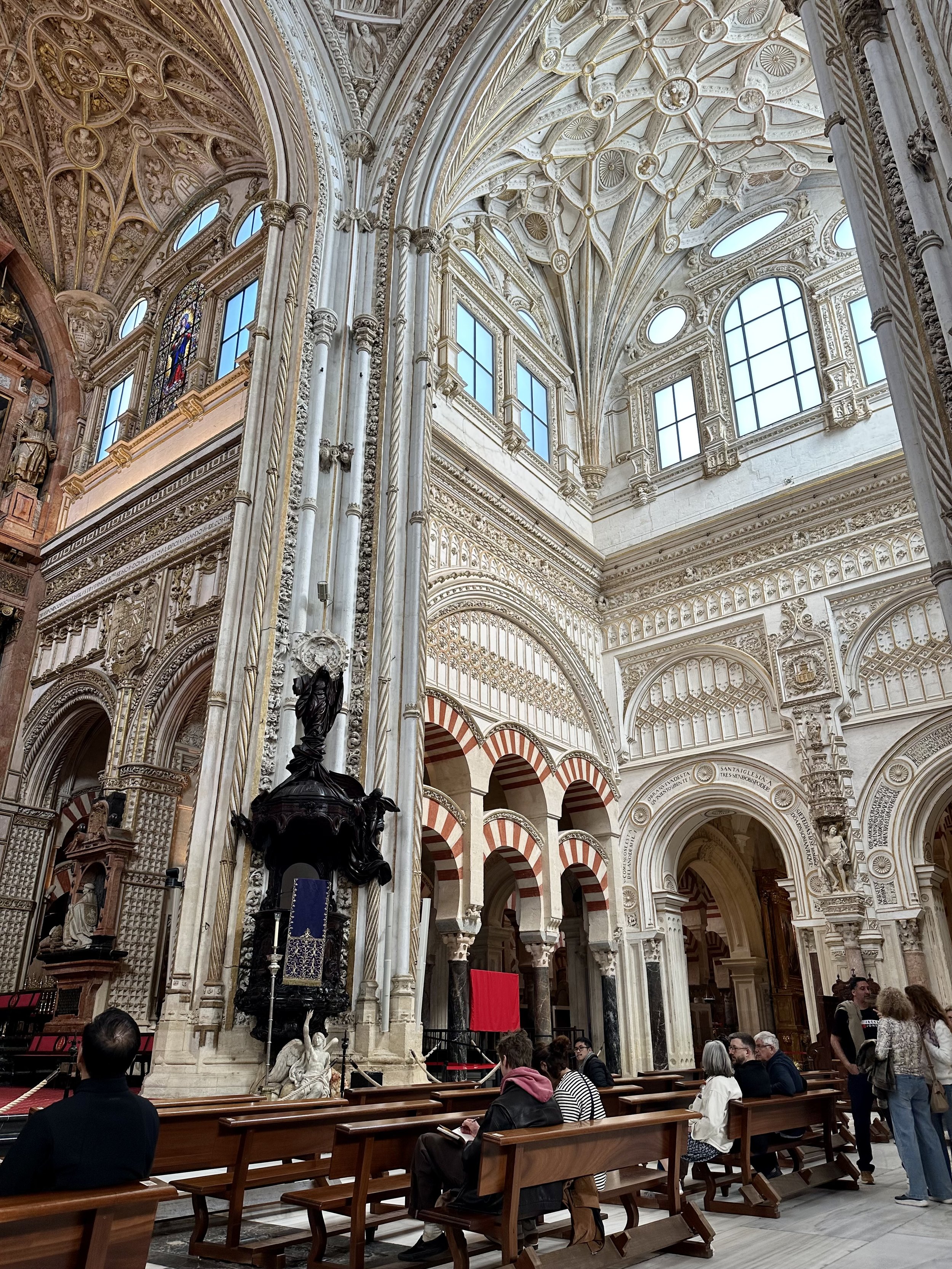
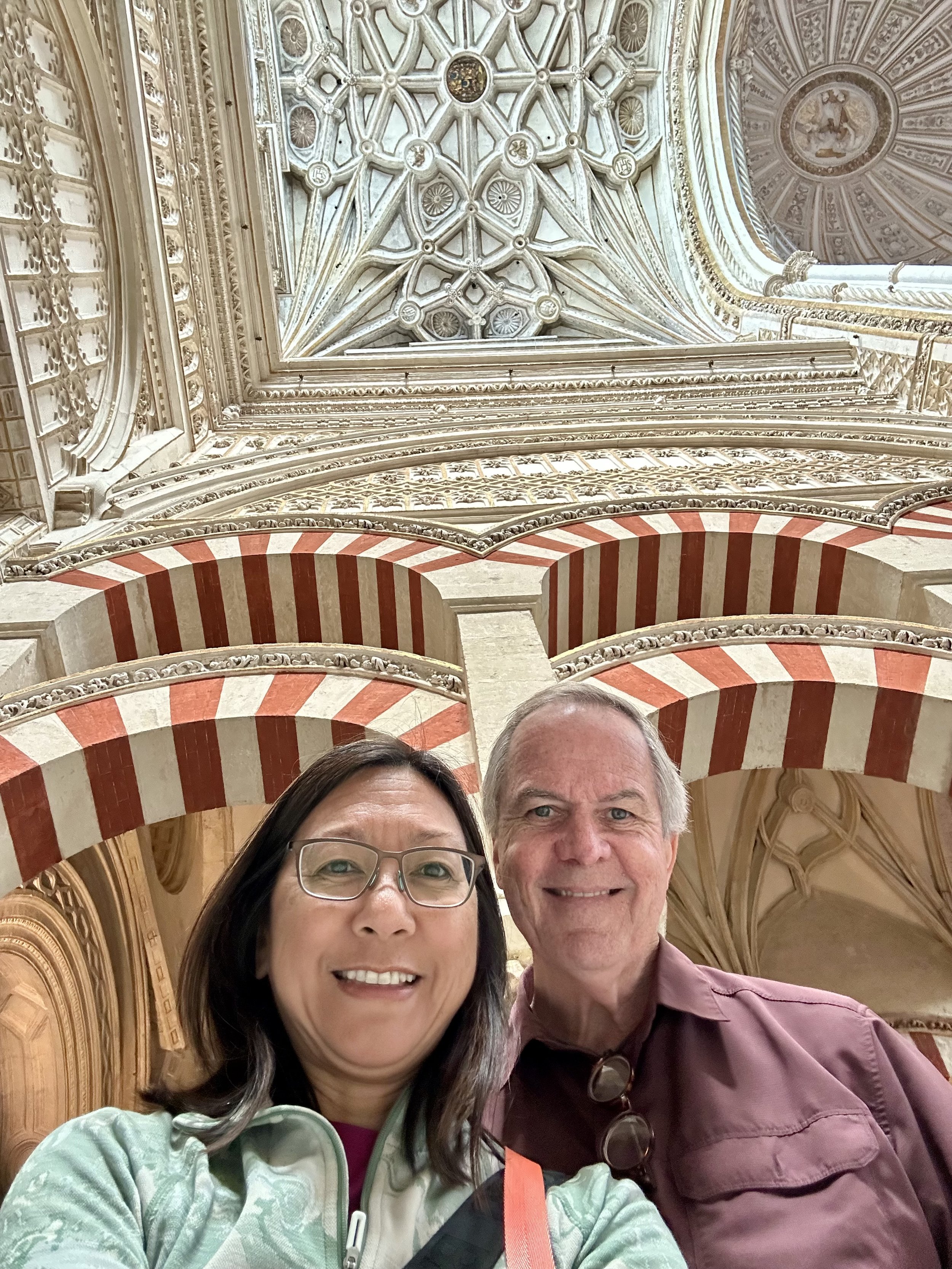
Here’s a great photo of the Main Chapel ceiling from the Mosque-Cathedral’s official website.
For me, the Main Chapel was sensory overload. It was a relief to return to the soothing repetition of the striped arches in the mosque. As we made our way to the exit, I marveled at the fusion of styles. The Moorish arches, Gothic vaulted ceilings, and Renaissance art came together in many different and beautiful ways.
The immensity and grandeur of the Great Mosque can help one imagine how during the 10th and 11th centuries, Córdoba was the European center of culture and learning, and one of the most advanced cities in the world. The magnificent cathedral rising in the center of it makes it a unique place of worship. It’s absolutely fitting that the Mosque-Cathedral of Córoba is a UNESCO World Heritage Site.
